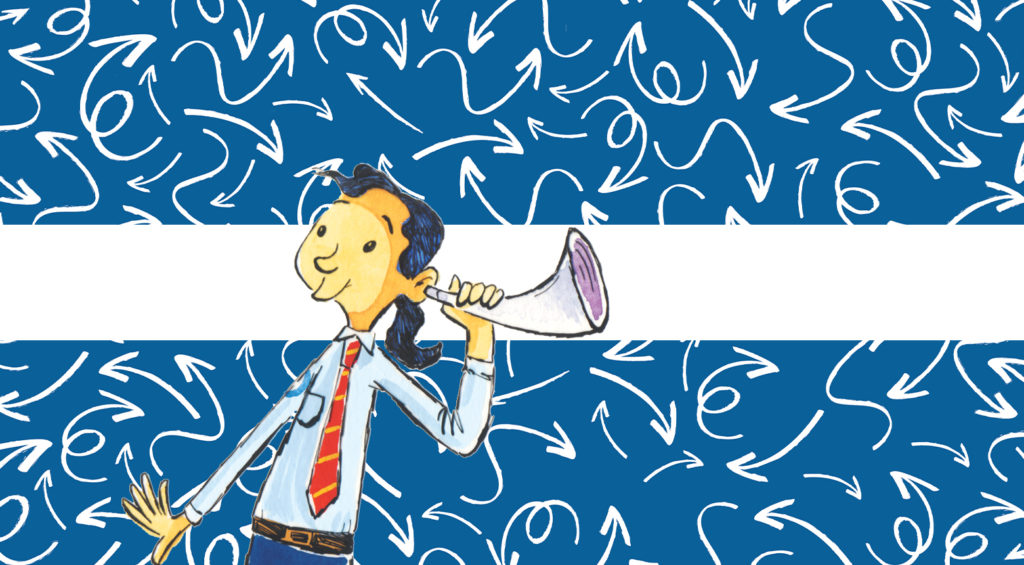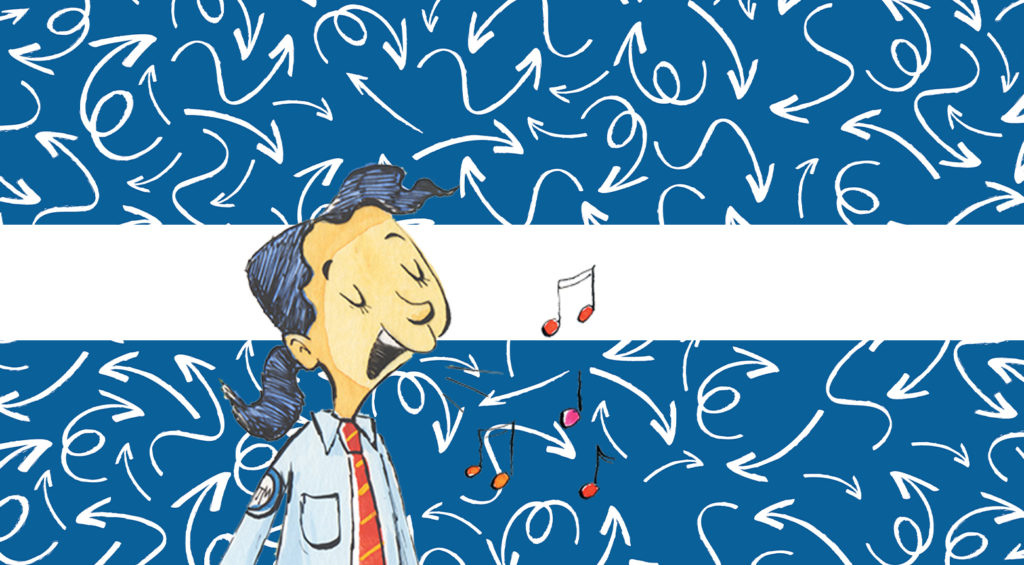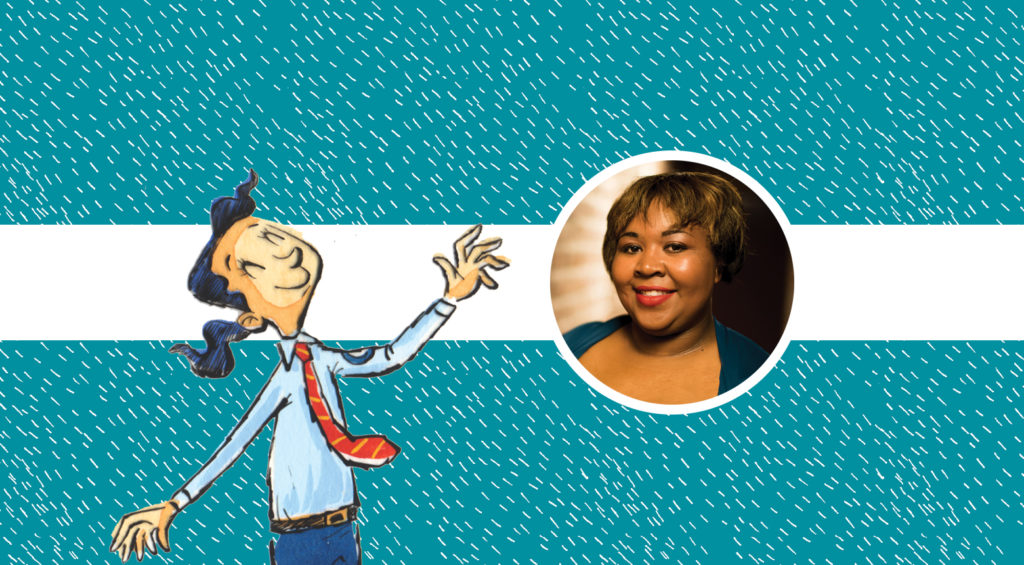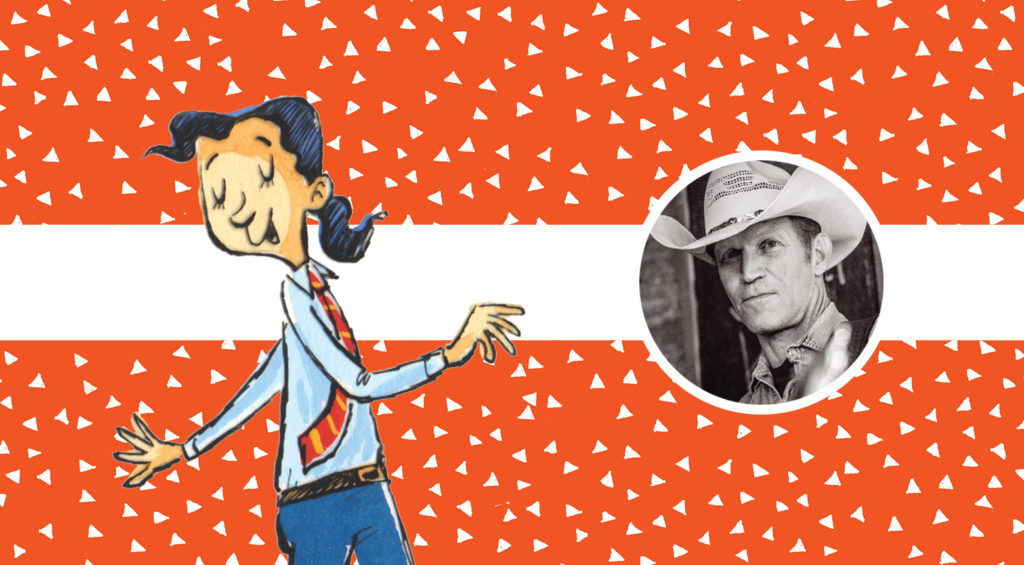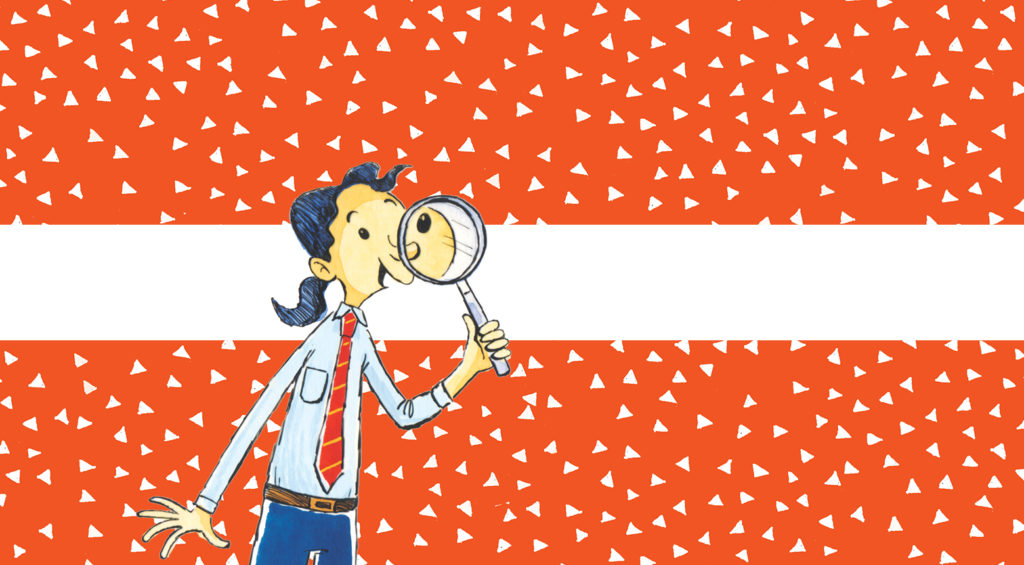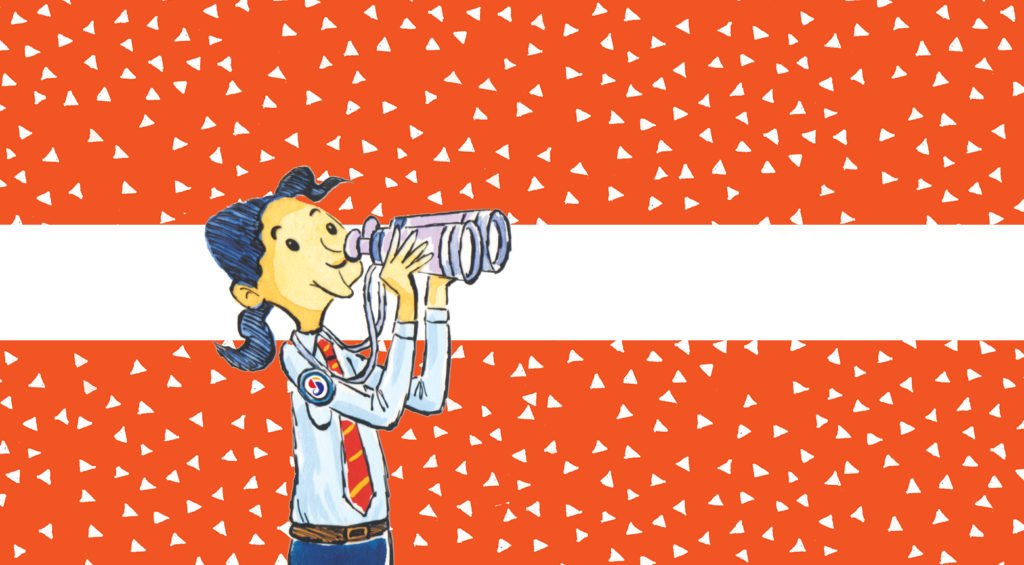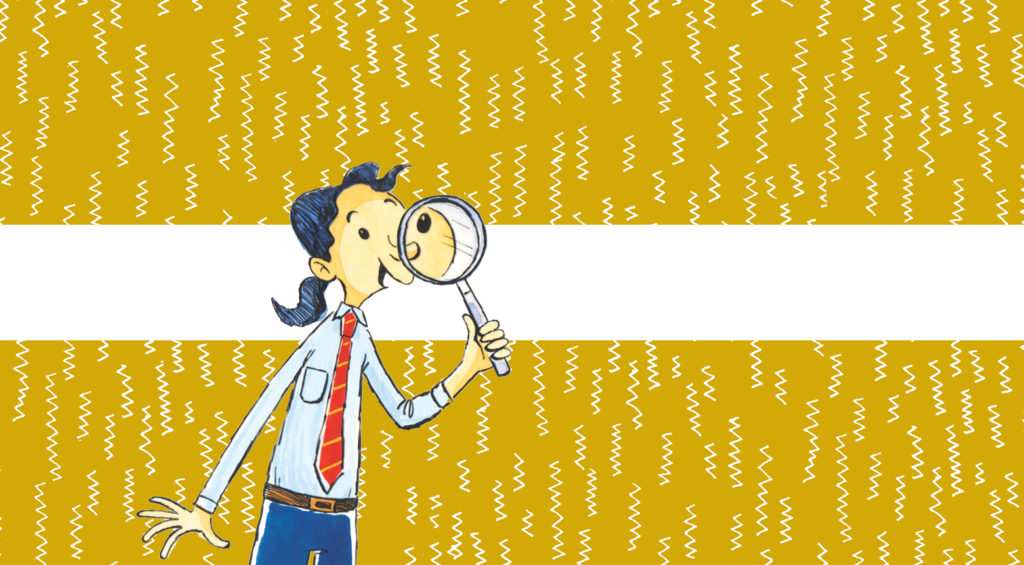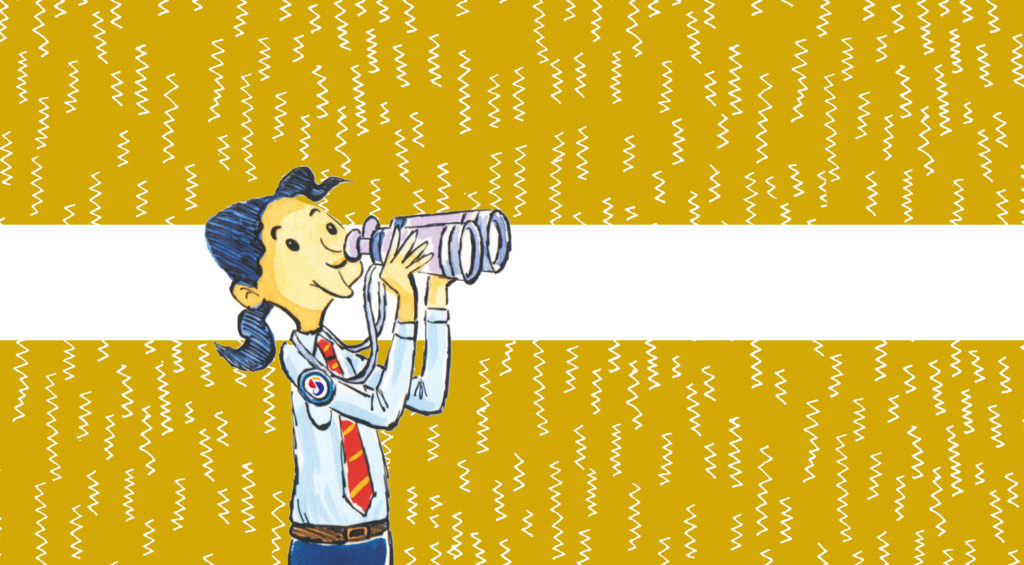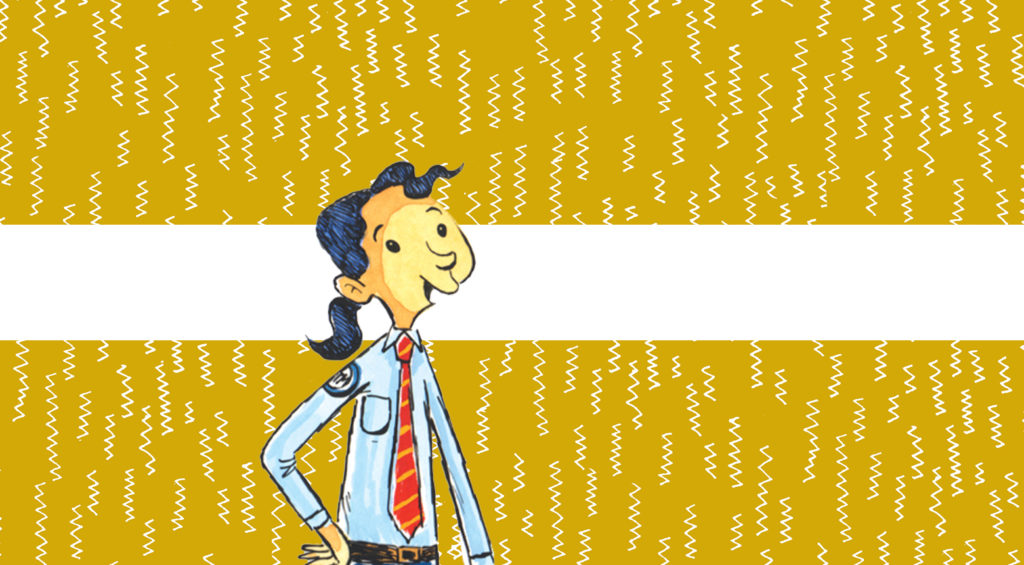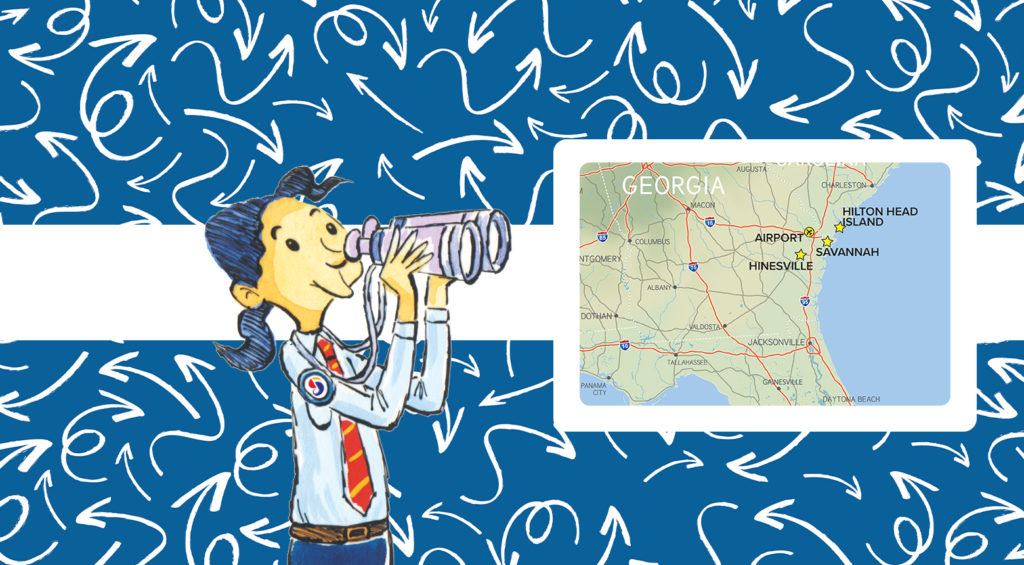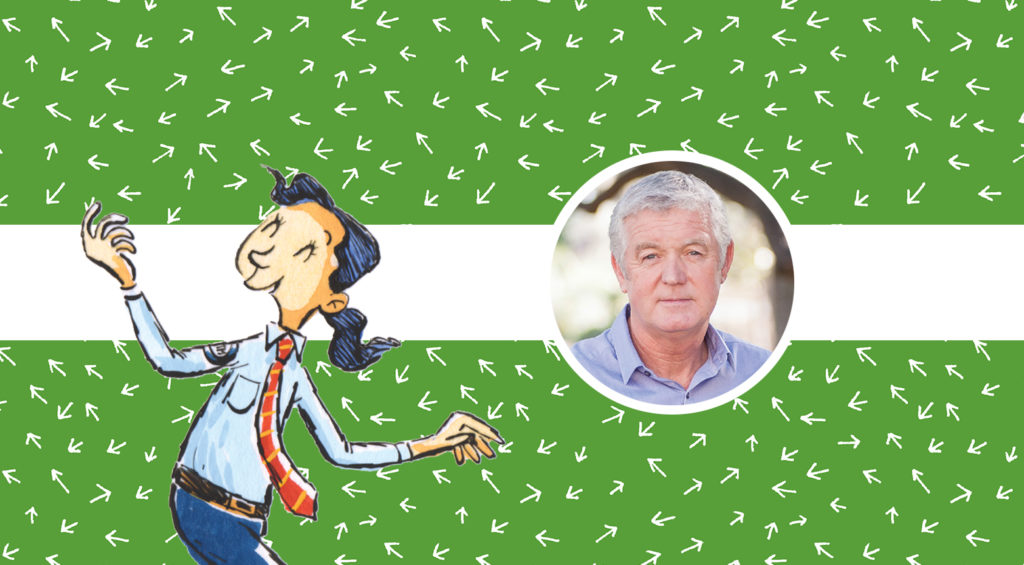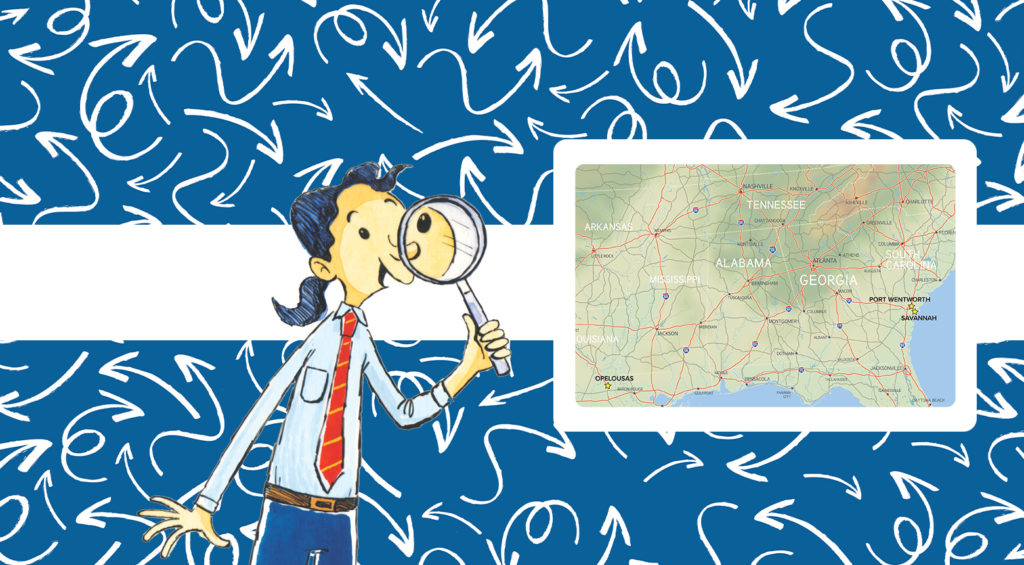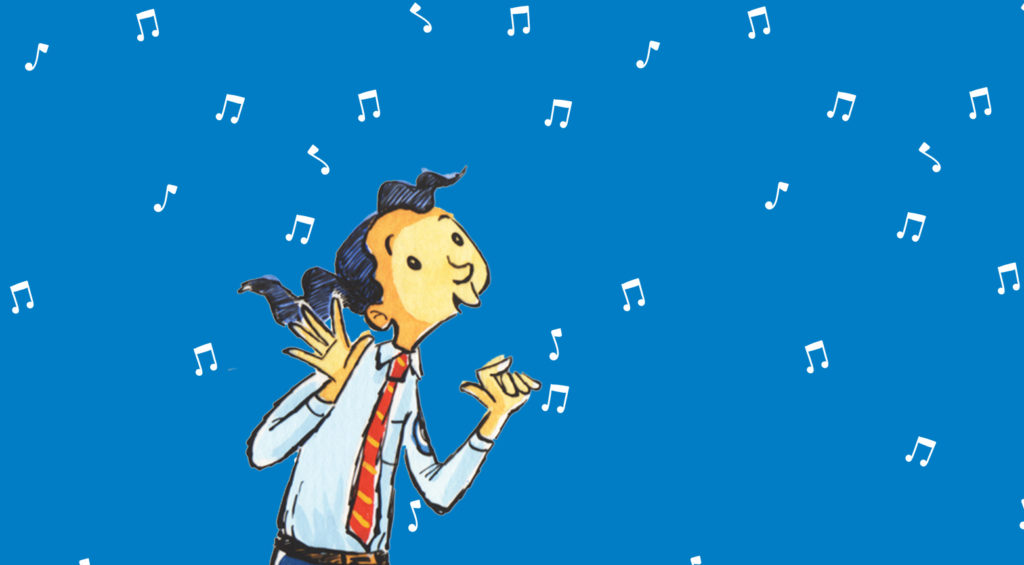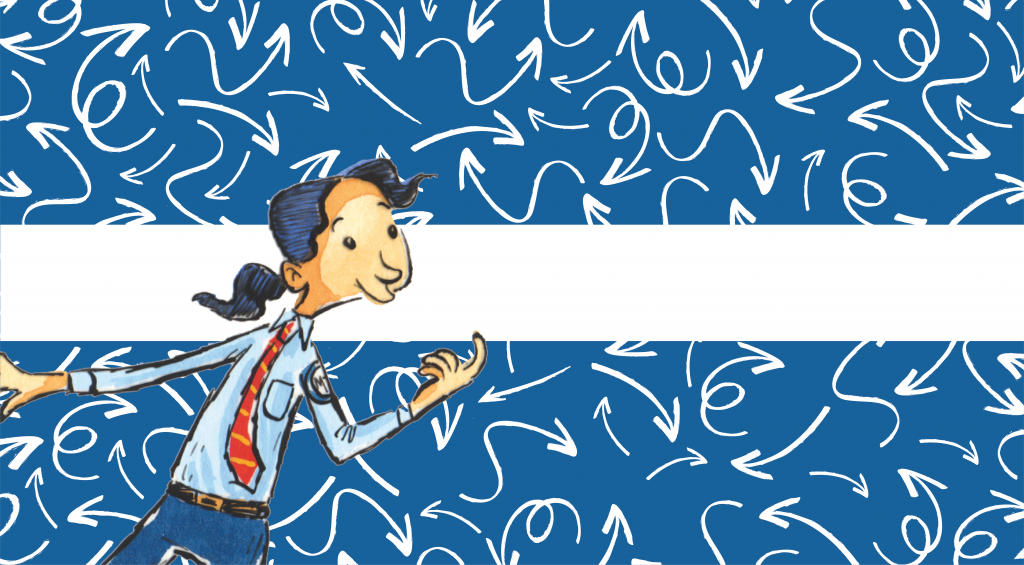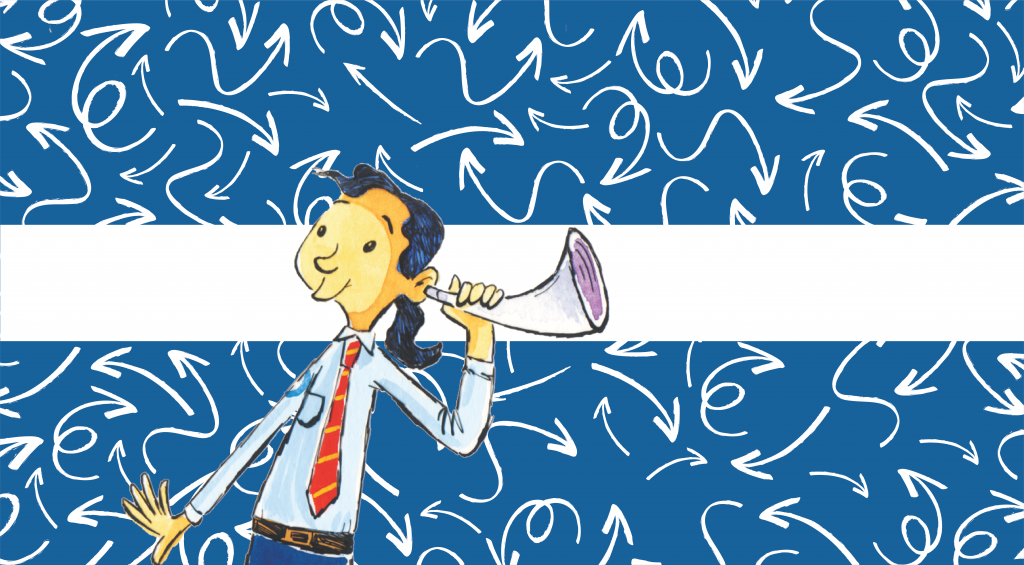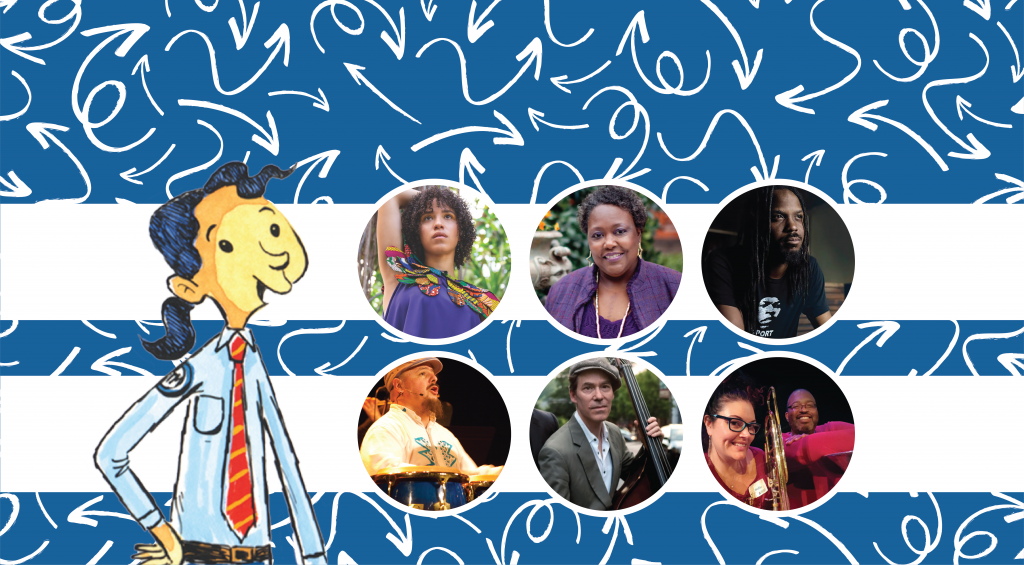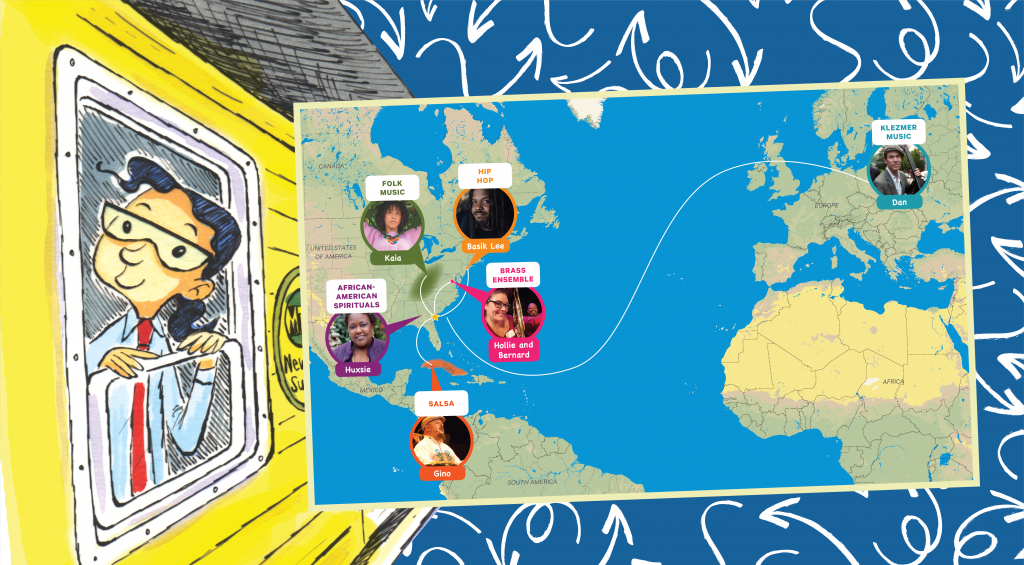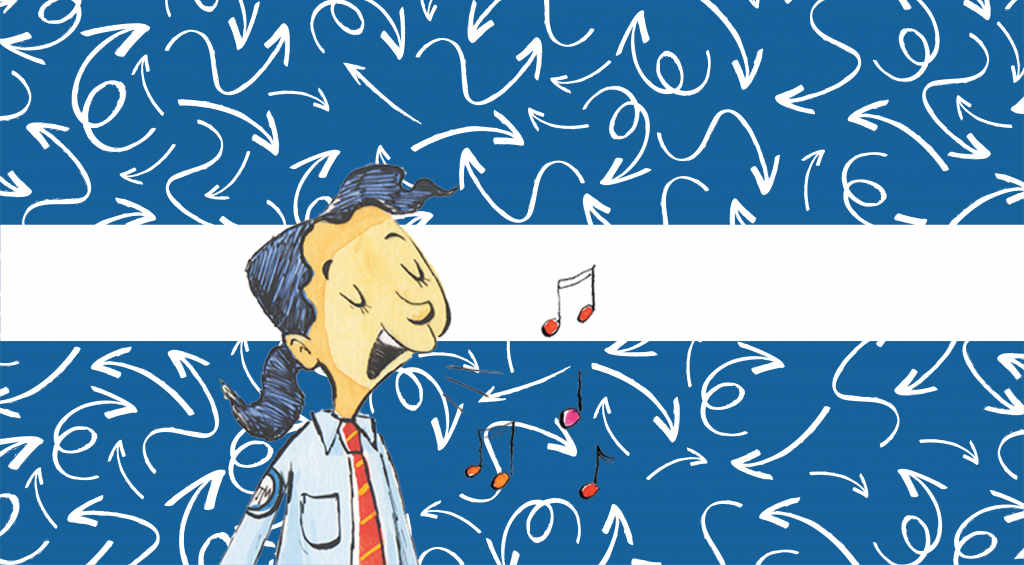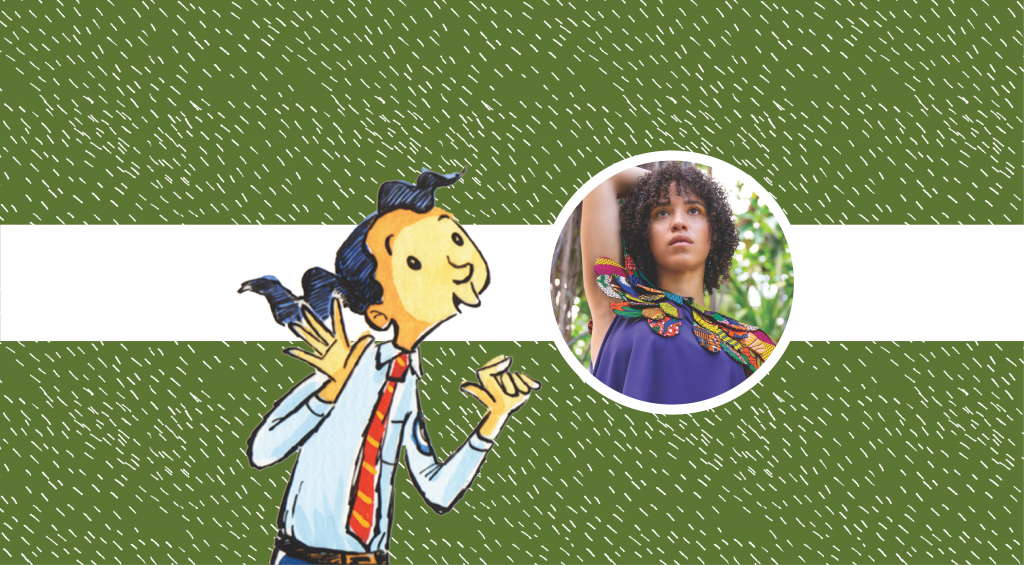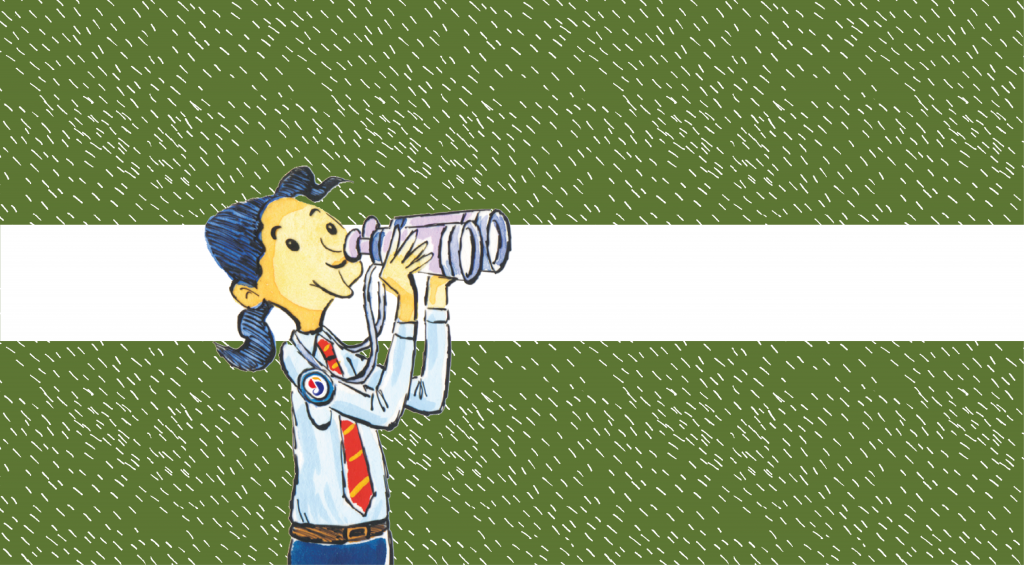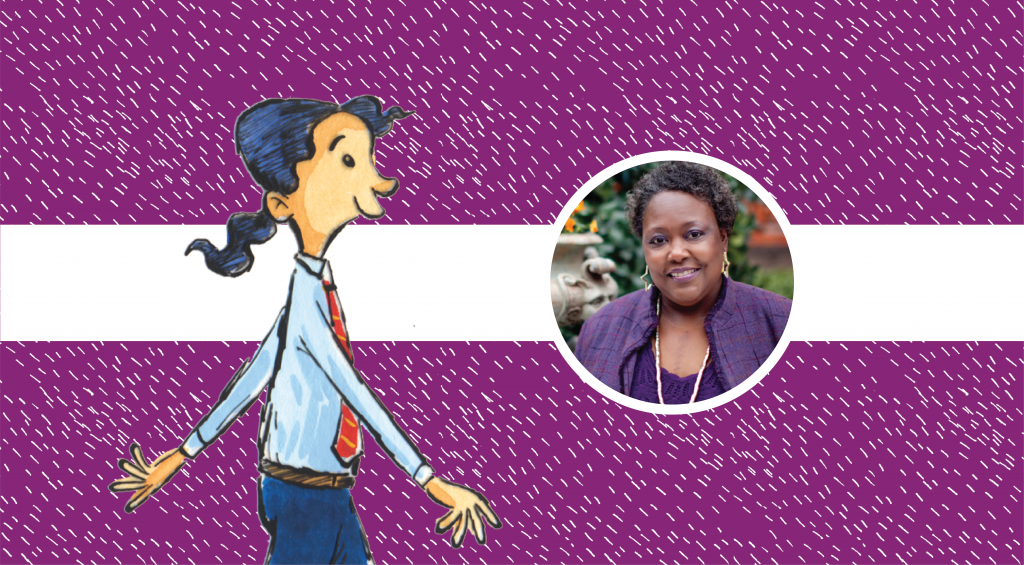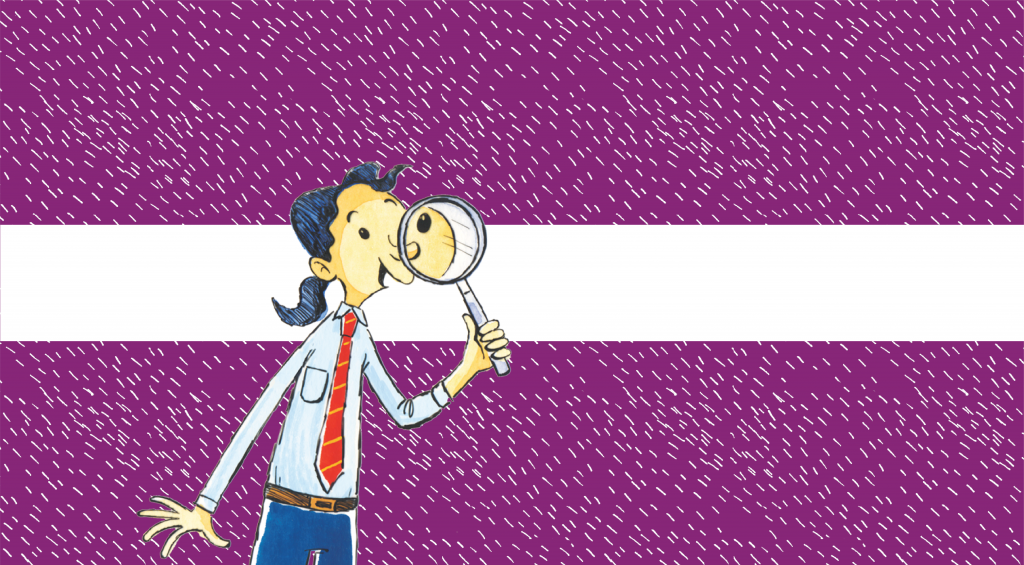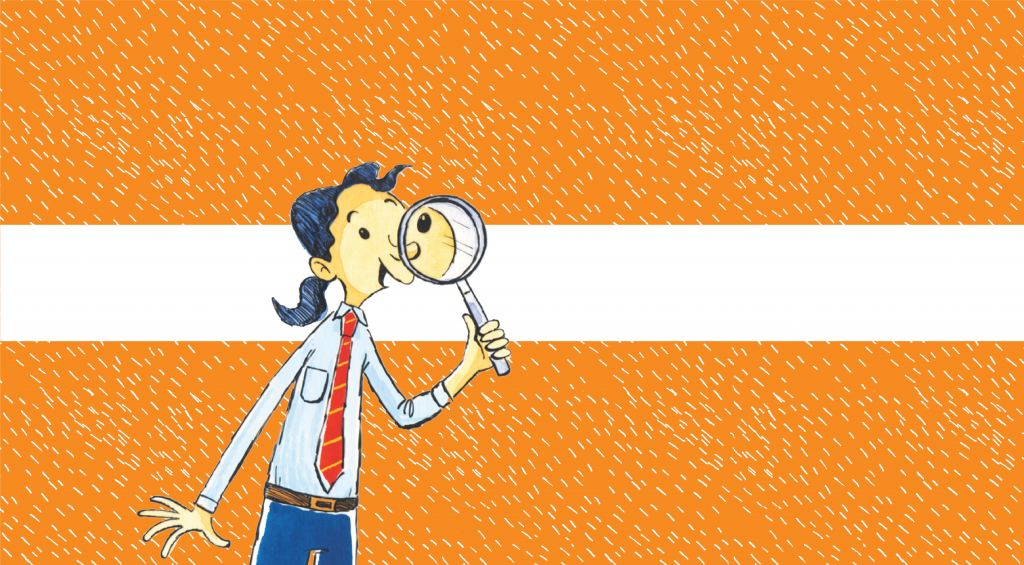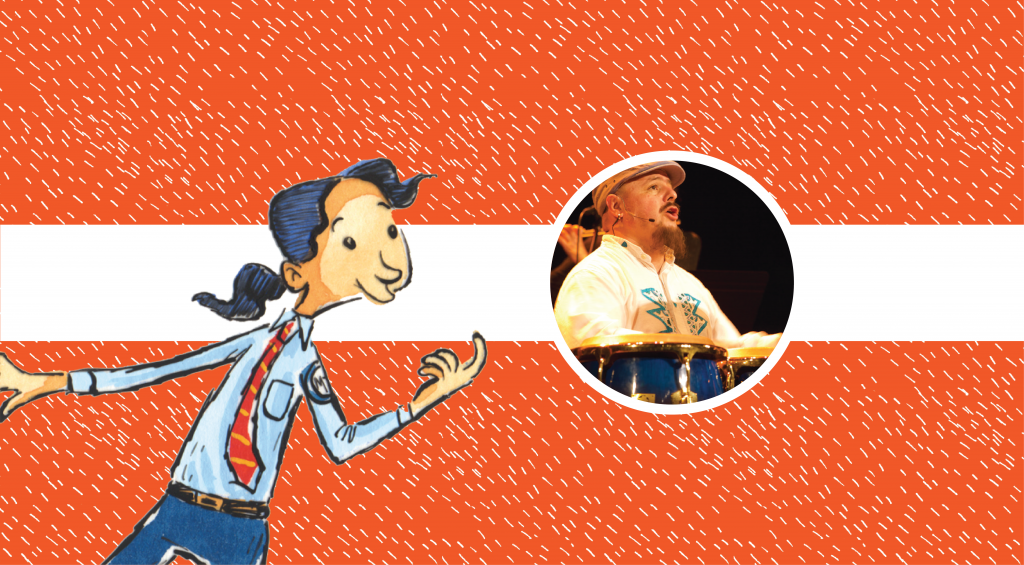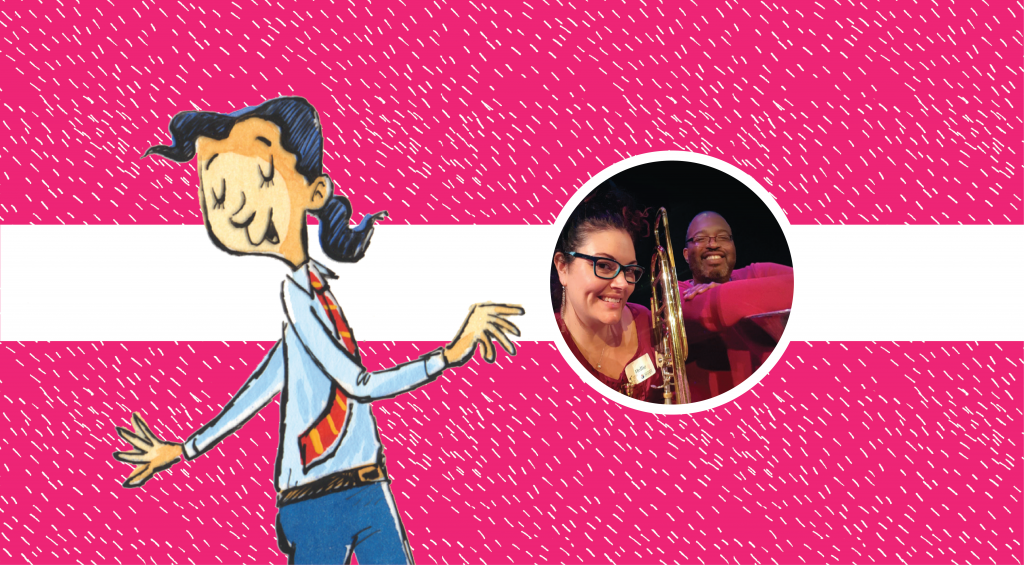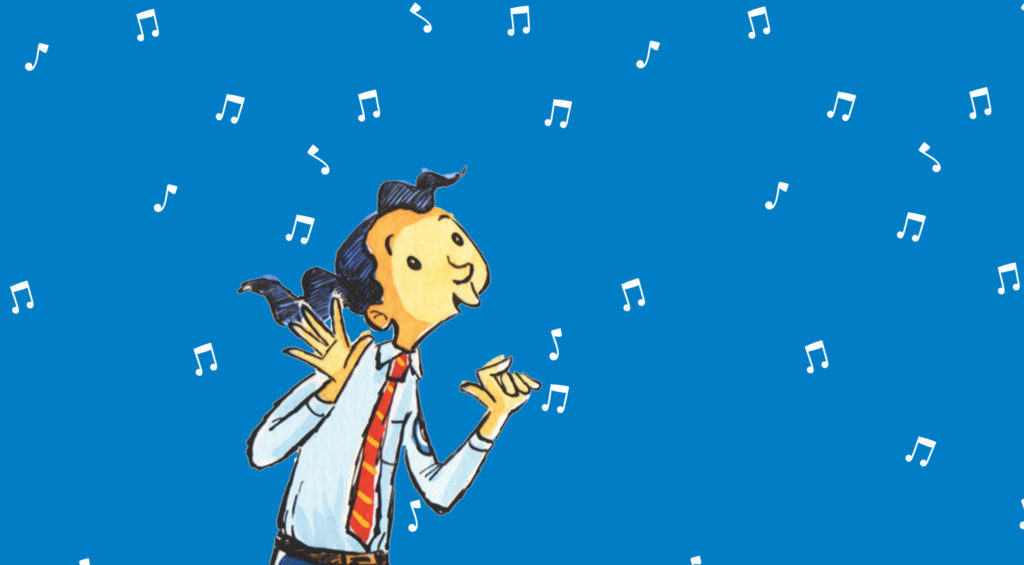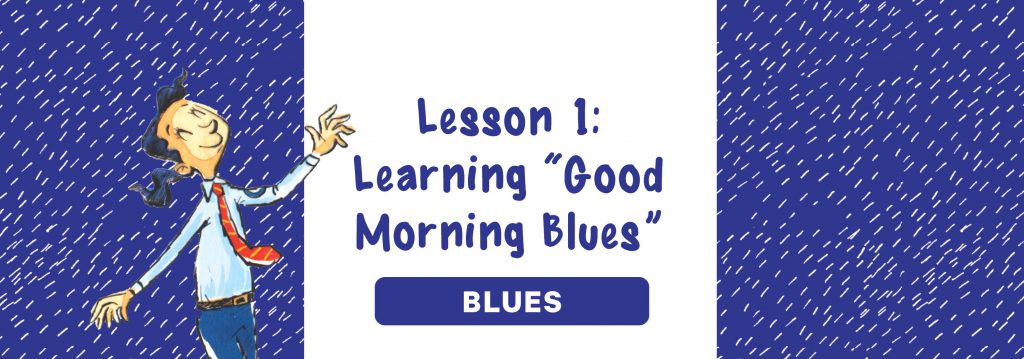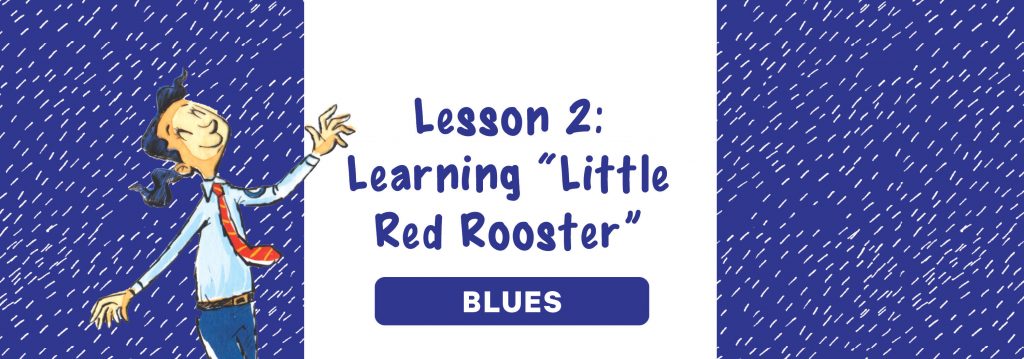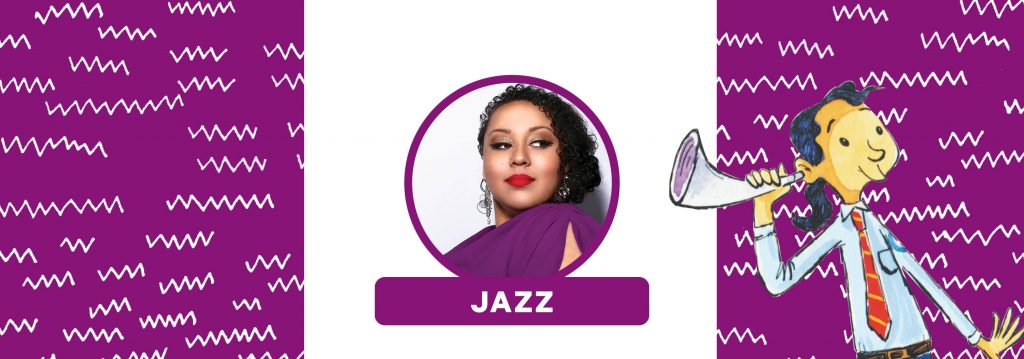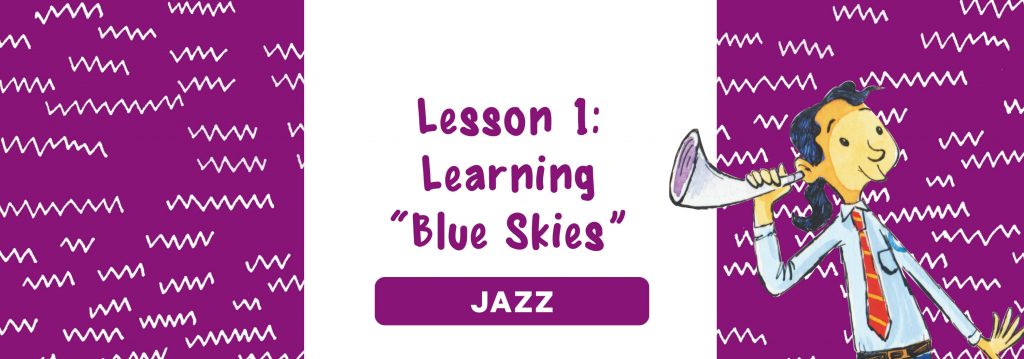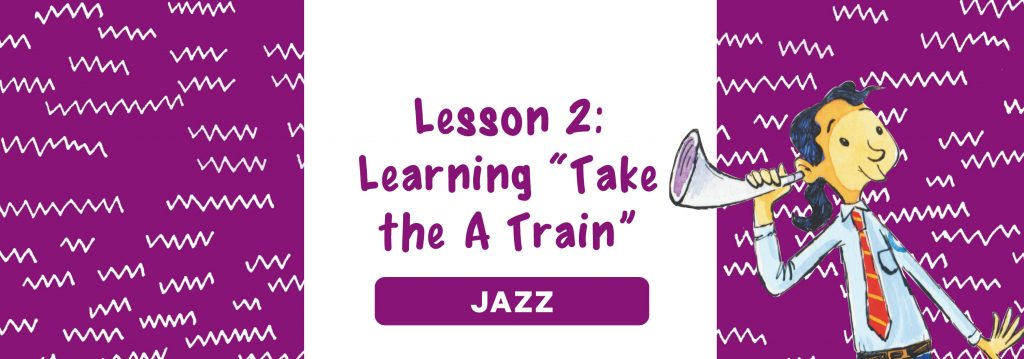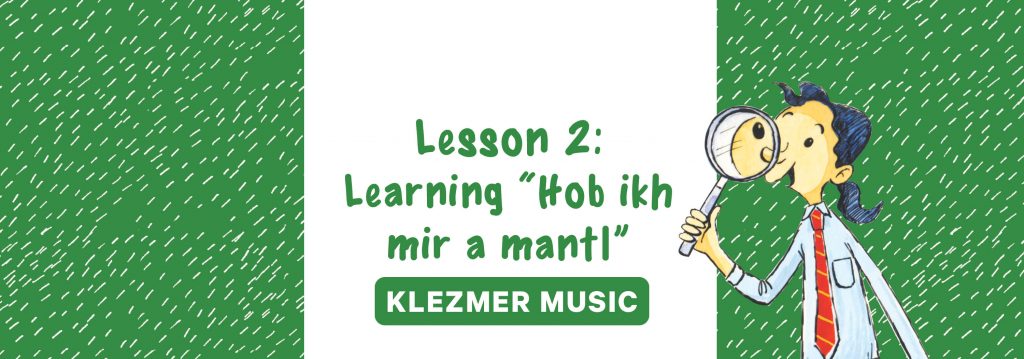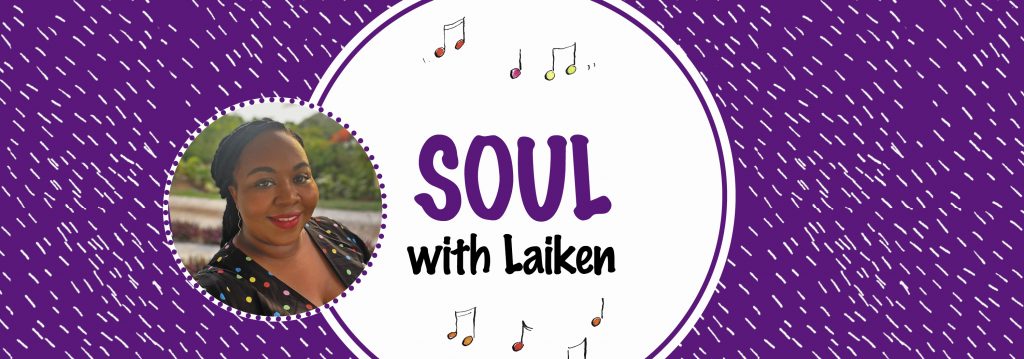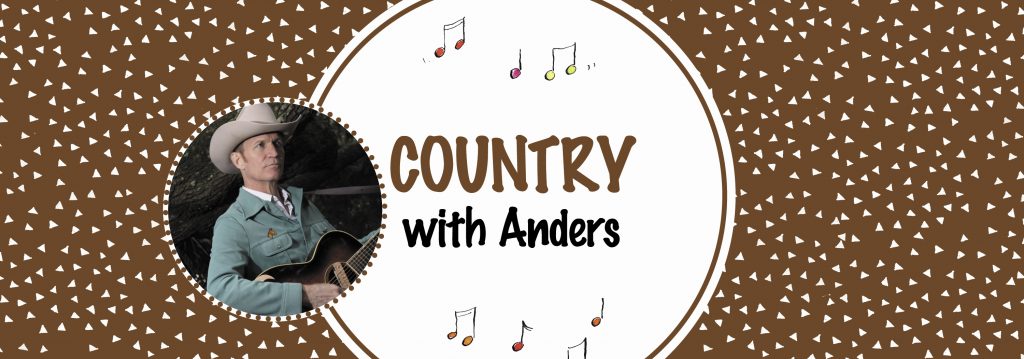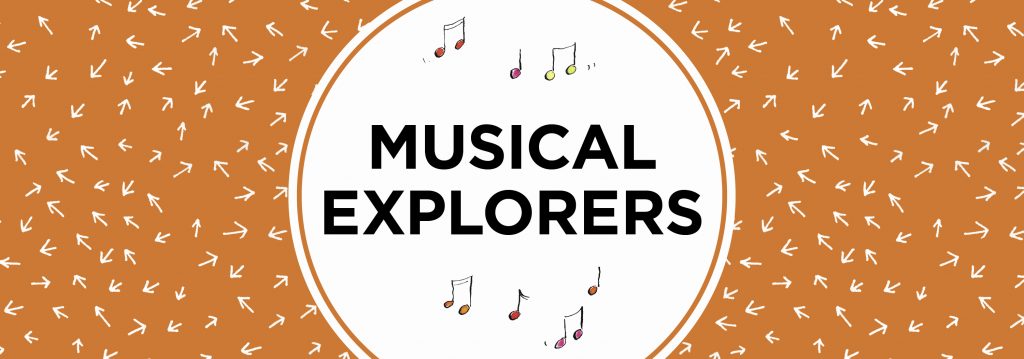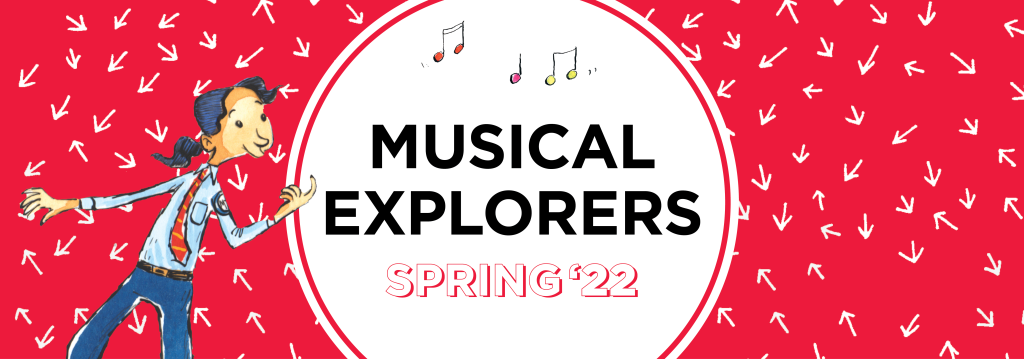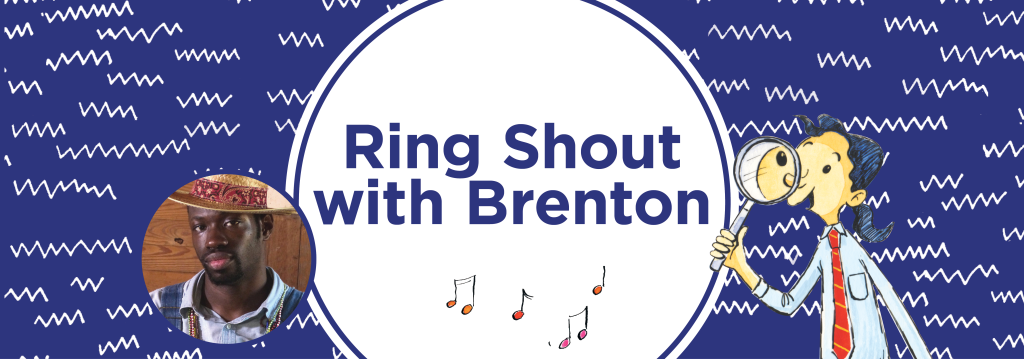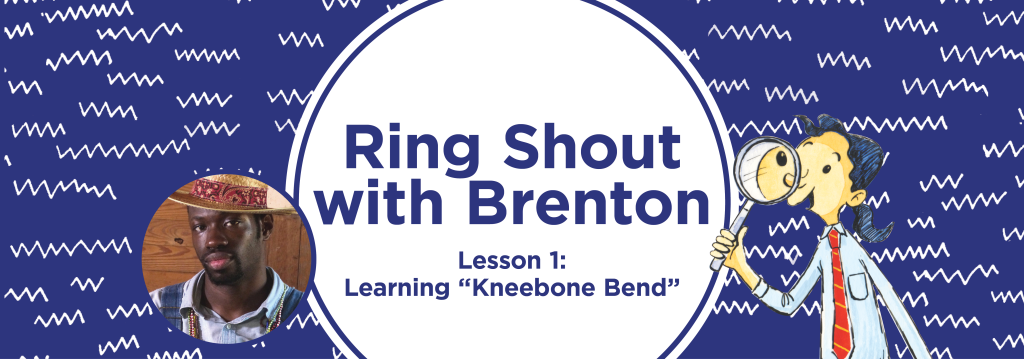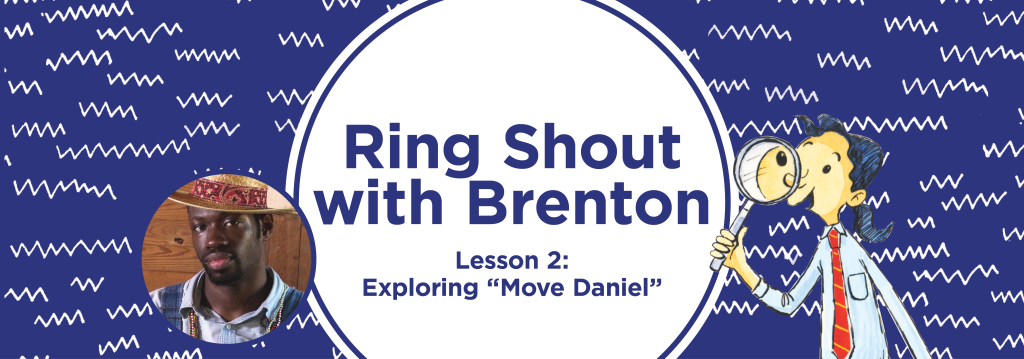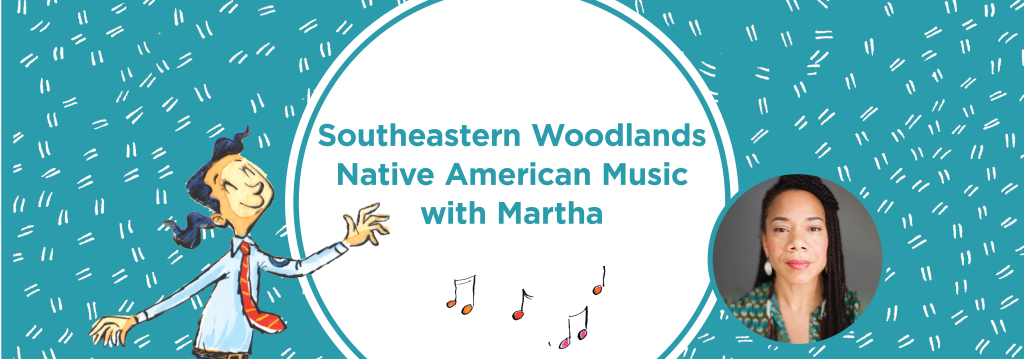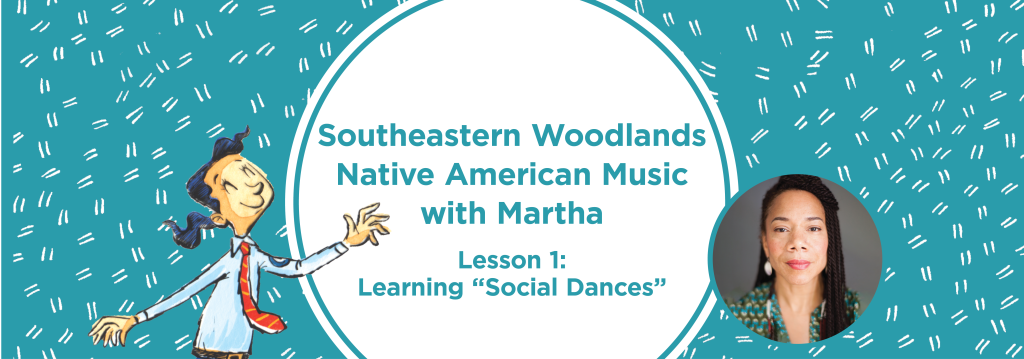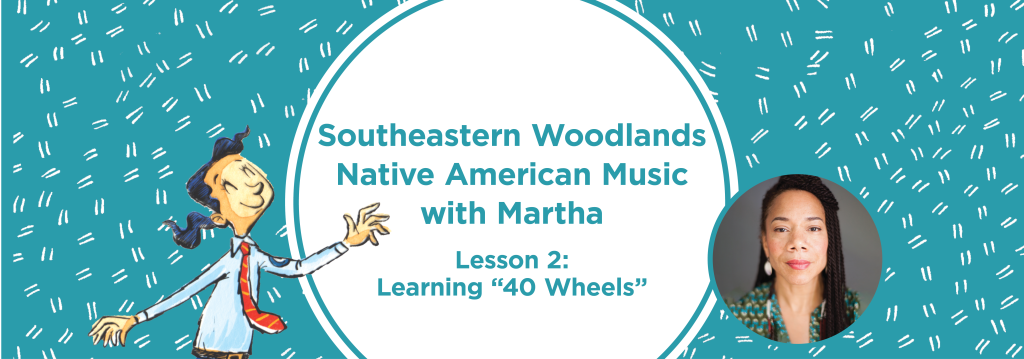This Teacher Guide (TG) contains six units, each devoted to one of our Musical Explorers genres. Every unit contains two lessons, each focusing on a song; the lessons guide you through the process of learning the songs, as well as teaching relevant musical concepts and exploring the cultural context of each genre. There are multiple…
Posts by Brianna Repella
Vocal and Body Warm-Ups
Start each lesson with warm-up activities in order to establish a routine that fosters healthy vocal technique, kinesthetic learning, and active listening. The following warm-ups are designed to work as a sequence but can also be used as stand-alone activities, depending on time, objective, and teacher preference. Finding Your Breath Smooth and Bouncy Breath: Breathing…
Becoming Musical Explorers
In this introductory unit, you will find activities and warm-ups you can use throughout the year. Start by introducing Melody and our musical region on SG1. Where is our school on this map? As we explore this region, what kinds of music do you think we might find? On SG2–3, you will find two activities…
Unit 1: Soul Music with Laiken
Melody will take us on a journey to Hilton Head Island, South Carolina to meet our first singer, Laiken. Use SG6–8 to meet Laiken and prepare students to learn about soul music. Genre Overview Soul music derives from Rhythm and Blues (R&B), a form of African-American popular music that arose during the 1940s. R&B and…
Lesson 1: Learning “I Feel Good”
Aim: How can we explore steady beat and rhythm with “I Got You (I Feel Good)?” Summary: Students learn to sing and move along to “I Got You (I Feel Good)” while building vocabulary to describe musical opposites and differences. Materials: Musical Explorers CD or online audio, rhythm sticks (optional) Standards: GA: ESGMK-2.CR.1; ESGMK-2.CR.2; ESGMK-1.CR.3;…
Lesson 2: Exploring “I Heard It Through the Grapevine”
Aim: How can we explore backbeat by moving to “I Heard It Through the Grapevine?” Summary: Students learn to sing and move along to “I Heard It Through the Grapevine” while building vocabulary to describe musical opposites and differences. Materials: Music Explorers CD or online audio Standards: GA: ESGMK-2.PR.3; ESGMK-2.RE.1; ESGMK-2.RE.2; ESGMK-2.RE.3; ESGMK-2.CN.1; ESGMK-2.CN.2 SC:…
Soul Music Unit Music Assessment
Seat the Beat (Rhythm) Materials Needed 4 chairs Instructions 1. Place four chairs in the front of the room. Explain that each chair represents one beat in a 4/4 measure of music. 2. The teacher will call upon a student to choose a chair and decide which note value they would like to represent: a…
Unit 2: Country Music with Anders
Melody will take us on a journey from Hilton Head Island, South Carolina to Hinesville, Georgia to meet our next singer, Anders. Use SG13–15 to meet Anders and prepare your students to learn about country music. Genre Overview Country music originated in the southern United States in the 1920s. It has its roots in blues…
Lesson 1: Learning “Waiting for a Train”
Aim: How can we distinguish chest voice and head voice in yodeling as an important element of country music? Summary: Students sing “Waiting for a Train” and explore vocal registers (chest voice/head voice). Students identify and create their own rhyming lyrics. Materials: Musical Explorers CD or online audio Standards: GA: ESGMK-2.CR.2; ESGMK-1.CR3; ESGMK-2.PR.1, ESGMK-2.RE.1; ESGMK-2.CN.1…
Lesson 2: Exploring “Five Feet High and Rising”
Aim: How do the musical elements of modulation, verse, and lyrics tell a story in “Five Feet High and Rising?” Summary: Students recognize modulation between verses and how it is used to visualize lyrics in “Five Feet High and Rising.” Materials: Musical Explorers CD or online audio Standards: GA: ESGMK-2.CR.2; ESGMK-2.PR.3; ESGMK-2.RE.1; ESGMK-2.RE.3; ESGMK-2.CN.1; ESGMK-2.CN.2…
Country Music Unit Music Assessment
Improvising with Our Voices Materials Needed None Instructions 1. Encourage students to “put on their singing voices” and have sung conversations, promoting the idea of musical questions and answers. 2. Sing an initial question, prompting students to take turns singing an answer. Suggested themes: Conversational themes with questions and answers (from speaking to singing) Creating…
Unit 3: Music of Mali with Yacouba
Melody will take us on a journey from Hinesville, Georgia to the Savannah Airport to meet our next singer, Yacouba, who is travelling from his home in Manhattan, New York. Use SG18–20 to meet Yacouba and prepare your students to learn about the Music of Mali. Genre Overview For centuries, jelis—also called griots in French—have…
Lesson 1: Learning “Kelefaba”
Aim: How does an instrument accompany a melody? Summary: Students will sing “Kelefaba,” and learn how a simple, two-note pattern on the kora provides the foundation for the song. Materials: Musical Explorers CD or online audio Standards: GA: ESGMK-2.CR.1; ESGMK-2.RE.1; ESGMK-2.RE.2; ESGMK-2.CN.2 SC: MGK-2.2, MGK-2.3, MGK-2.5, MGK-2.6 Vocabulary: accompaniment, jeli, kora, melody “Kelefaba” is…
Lesson 2: Learning “Wawanko”
Aim: How are movements used to express the message of the lyrics in “Wawanko”? Summary: Students will learn to sing in call and response and create their own movements. Materials: Musical Explorers digital resources, Musical Explorers Student Guide Standards: GA: SC: MGK-2.1, MGK-2.2, MGK-2.3, MGK-2.5, MGK-2.6 Vocabulary: call and response, improvise Sing “Wawanko” Listen…
Mali Music Unit Music Assessment
Telling a Story with Music (Pitch, Form) Materials Needed White board, markers, “Goldilocks and the Three Bears” story, Orff instruments Instructions 1. Discuss family with students. Who are the members of your family? How are you alike? How are you different? 2. Read “Goldilocks and the Three Bears,” a story about another family. How are…
Concert Preparation: First Semester
Before the Concert Review the artists and music that the students encountered during the fall semester. Look at SG23 and have students find the artists and genres represented on the map. What do you remember about the artists and their music? Listen to a brief excerpt by each of the artists on the Musical Explorers…
Unit 4: Musical Theater with J.J.
Melody now takes us on a journey from the Trustees Theater to Port Wentworth, Georgia to meet our next singer, J.J. Use SG27 – 33 to meet J.J. and prepare your students to learn about Musical Theater. Genre Overview The songs in this unit are part of the larger performing arts genre of Musical Theater….
Lesson 1: Learning “Do-Re-Mi”
Aim: How can we explore a musical scale while learning about musical theater? Summary: Students learn to identify and sing the scale in “Do-Re-Mi” while understanding the genre of musical theater. Materials: Musical Explorers CD or online audio, scissors Standards: GA: ESGMK-2.CR.1; ESGMK-2.CR.2; ESGMK-2.CR.3; ESGMK-2.PR.1; ESGMK-2.PR.3; ESGMK-2.RE.1; ESGMK-2.RE.3; ESGMK-2.CN.1 SC: MGK-2.1, MGK-2.3, MGK-2.4, MGK-2.5, MGK-2.6…
Lesson 2: Learning “Somewhere”
Aim: How can we explore our emotions through musical expression? Summary: Students learn to sing “Somewhere” expressively while understanding how music can convey their feelings. Materials: Musical Explorers CD or online audio, scissors, markers or crayons, popsicle sticks (optional) Time Required: 30 minutes (three 10-minute activities) Standards: GA: ESGMK-2.CR.3; ESGMK-2.PR.1; ESGMK-2.RE.1; ESGMK-2.RE.2; ESGMK-2.CN.1; ESGMK-2.CN.2 SC:…
Musical Theater Unit Music Assessment:
Moving Melodies (Pitch) Materials Needed Various song recordings, paper, writing/coloring utensils, rhythm sticks Instructions 1. Practice singing high and low pitches through call and response. 2. Practice tracing the shapes of the melodies with your finger in the air and/or rhythm stick. 3. Drawing the examples below on a board, have students trace each melodic…
Unit 5: Music of Ireland with Harry
Melody now takes us on a journey from Port Wentworth, Georgia to Savannah, Georgia to meet our next singer, Harry. Use SG34–36 to meet Harry and prepare your students to learn about the music of Ireland. Genre Overview Traditional Irish music comes in many shapes and forms. The most well-known forms of Irish music can…
Lesson 1: Learning “O’ro the Rattlin’ Bog”
Aim: How can we explore fast and slow tempos in “O’ro the Rattlin’ Bog?” Summary: Students learn to sing and move along to “O’ro the Rattlin’ Bog” while building vocabulary to describe musical opposites. Materials: Musical Explorers CD or online audio, markers or crayons Standards: GA: ESGMK-2.CR.1; ESGMK-2.PR.1; ESGMK-2.PR.2; ESGMK-2.RE.1; ESGMK-2.RE.2; ESGMK-2.RE.3; ESGMK-2.CN.1; ESGMK-2.CN.2 SC:…
Lesson 2: Exploring “I’ll Tell Me Ma”
Aim: How can we recognize verse and chorus in “I’ll Tell Me Ma?” Summary: Students learn to sing and dance to “I’ll Tell Me Ma” while using contrasting movements for the verses and chorus. Materials: Musical Explorers CD or online audio Standards: GA: ESGMK-2.CR.3; ESGMK-2.PR.1; ESGMK-2.PR.3; ESGMK-2.RE.1; ESGMK-2.RE.2; ESGMK-2.RE.3; ESGMK-2.CN.1; ESGMK-2.CN.2 SC: MGK-2.1, MGK-2.4, MGK-2.5, MGK-2.6…
Irish Music Unit Music Assessment
Feeling the Tempo (Tempo) Materials Needed Various audio recordings Instructions 1. Review the definitions of allegro (fast) and adagio (slow). 2. Repeat the word “allegro” very quickly with the students. 3. Repeat the word “adagio” very slowly (e.g. “ah-daah-joe, ah-daah-joe”) with students. 4. Have students create one or two expressive movements to demonstrate allegro and…
Unit 6: Zydeco Music with Jeffery
Melody will now take us to Opelousas, Louisiana to meet our final artist, Jeffery. Use SG 40–42 to meet Jeffery and prepare your students to learn about zydeco. Genre Overview Zydeco is music that comes from the rural Creole people of southwest Louisiana. The Creole people are descendants of the Native Americans who originally lived…
Lesson 1: Exploring “Hard to Stop”
Aim: How can we explore tempo with the song “Hard to Stop?” Summary: Students learn to sing and move along to “Hard to Stop” while building vocabulary to describe musical opposites. Materials: Musical Explorers CD or online audio, markers or crayons Time Required: 40 minutes (four 10-minute activities) Standards: GA: ESGMK-2.PR.1; ESGMK-2.PR.2; ESGMK-2.RE.1; ESGMK-2.RE.2; ESGMK-2.RE.3;…
Lesson 2: Learning “Allons a Lafayette”
Aim: How can we explore rhythmic patterns with the song “Allons a Lafayette?” Summary: Students learn to sing and move along to “Allons a Lafayette” while building vocabulary to describe rhythmic patterns. Materials: Musical Explorers CD or online audio, markers or crayons, yarn, scissors, cardstock, hole puncher Time Required: 40 minutes (two 10-minute activities and…
Zydeco Music Unit Music Assessment
Identify the Instrument (Timbre) Materials Needed Percussion family sound examples, available at savannahmusicfestival.org/musicalexplorers Instructions 1. Review the percussion family on SG45. 2. Show students a picture of a triangle. 3. Using sound examples on savannahmusicfestival.org/musicalexplorers, ask students to raise their hands when they hear the instrument. 4. Repeat with frottoir, drums, and cymbal. 5. Next,…
Concert Preparation: Second Semester
Before the Concert Review the artists and music that the students encountered during the spring semester. Look at SG46 and have students find the artists and genres represented on the map. What do you remember about the artists and their music? Listen to a brief excerpt by each of the artists on the Musical Explorers…
Family Resources
This year, your student is taking an exciting musical journey. Musical Explorers is designed to connect students in grades K–2 to the musical community of the Georgia and South Carolina Lowcountry as they build fundamental music skills through listening, singing, and moving to songs from a wide variety of musical styles. In the coming year, your…
Introduction
Welcome to Musical Explorers! Musical Explorers is designed to connect students in grades K–2 to the musical community of the Georgia and South Carolina Lowcountry as they build fundamental music skills through listening, singing, and moving to songs from a wide variety of musical styles. In the coming year, you and your students will meet…
How to Use the Teacher and Student Guides
This Teacher Guide contains six units, each devoted to one of our Musical Explorers genres. Every unit contains two lessons, each focusing on a song; the lessons guide you through the process of learning the songs, as well as teaching relevant musical concepts and exploring the cultural context of each genre. There are multiple activities…
Meet the Artists
Kaia Kater, Folk Music Growing up surrounded by the folk music of her family in Montreal, Kaia took those ties to West Virginia to learn more about folk music and storytelling. Now, she puts her skills and roots to work as a singer-songwriter and has released three albums that focus on social issues, personal narratives,…
Becoming Musical Explorers
In this introductory unit, you will find activities and warm-ups you can use throughout the year. Start by introducing Melody on SG1 and the musical region on SG2. Where is our state on this map? As we explore these regions, what kinds of music do you think we might find? On SG3–5, you will find…
Vocal and Body Warm-Ups
Start each lesson with warm-up activities in order to establish a routine that fosters healthy vocal technique, kinesthetic learning, and active listening. The following warm-ups are designed to work as a sequence but can also be used as stand-alone activities, depending on time, objective, and teacher preference. Finding Your Breath Smooth and Bouncy Breath: Breathing…
Unit 1: Folk Music with Kaia
Melody will take us on a journey to Toronto, Canada to meet our first singer, Kaia. Use SG7–9 to meet Kaia and prepare students to learn about folk music. Genre Overview American folk music is a genre that spans our country’s geography and draws on traditions that pre-date the nation’s founding. Broadly defined, folk music…
Lesson 1: Exploring “John Henry”
Aim: How can we understand how music tells a story while learning to sing the folk song “John Henry?” Summary: Students learn and sing “John Henry” while understanding how music can be used to tell a story. Materials: rhythm sticks, Musical Explorers CD or online audio Standards: GA: ESGMK-2.PR.1, ESGMK-2.RE.1, ESGMK-2.RE.2, ESGMK-2.RE.3, ESGMK-2.CN.1, ESGMK-2.CN.2 SC:…
Lesson 2: Exploring “Freight Train”
Aim How can we learn about melody and folk instruments through Elizabeth Cotten’s “Freight Train?” Summary: Students explore melody and banjo through the folk song “Freight Train.” Materials: Musical Explorers CD or online audio Standards: GA: ESGMK-2.PR.1, ESGMK-2.RE.1, ESGMK-2.RE.2, ESGMK-2.CN.1, ESGMK-2.CN.2, ESGMK-2.RE.3 SC: GM.PR.NL-AH.3, GM.RE.NL-AH.6, GM.RE.NL-AH.7, GM.CN.NL-AH.8, GM.CN.NL-AH.9 Vocabulary: banjo, melody Learn the Melody of “Freight Train”…
Unit 2: African-American Spirituals with Huxsie
Melody will take us on a journey from Toronto, Canada to Savannah to meet our next artist, Huxsie. Use SG13–15 to meet Huxsie and prepare your students to learn about African-American spirituals. Genre Overview African-American spirituals originated in the slave quarters of the American south, and are sacred songs with lyrics based on stories from…
Lesson 1: Exploring “Follow the Drinking Gourd”
Aim: What is the hidden meaning in “Follow the Drinking Gourd”? Summary: Students learn to sing “Follow the Drinking Gourd” and explore the hidden meaning of the song and the code found in the lyrics. Materials: Musical Explorers CD or online audio, pencils Standards: GA: ESGMK-2.CR.2, ESGMK-2.CR.3, ESGMK-2.PR.1, ESGMK-2.RE.1, ESGMK-2.RE.3, ESGMK-2.CN.1, ESGMK-2.CN.2 SC: GM.CR.NL-AH.1, GM.PR.NL-AH.3, GM.RE.NL-AH.6, GM.CN.NL-AH.8,…
Lesson 2: Learning “This Train Is Bound for Glory”
Aim: What musical opposites can we find in “This Train Is Bound for Glory”? Summary: Students explore the meaning of the song, and learn musical opposites of dynamics (loud/soft) and tempo (fast/slow). Materials: Musical Explorers CD or online audio Standards: GA: ESGMK-2.CR.1, ESGMK-2.CR.2, ESGMK-2.CR.3, ESGMK-2.PR.1, ESGMK-2.RE1, ESGMK-2.RE.3,ESGMK-2.CN.1, ESGMK-2.CN.2 SC: GM.CR.NL-AH.1, GM.CR.NL-AH.2, GM.PR.NL-AH.3, GM.RE.NL-AH.6, GM.CN.NL-AH.8, GM.CN.NL-AH.9 Vocabulary: dynamics, gospel,…
Unit 3: Hip Hop with Basik Lee
Melody will take us on a trip across town to meet our next artist, Basik Lee. Use SG19–21 to meet Basik Lee and prepare your students to learn about hip hop. Genre Overview Hip hop’s roots lie in the ancient storytelling traditions of the West African jelis, who Europeans called “griots,” that were brought…
Lesson 1: Learning “Hip Hop Hooray”
Aim: What are the basic building blocks of hip hop? Summary: Students will learn the hook to “Hip Hop Hooray” and learn about key elements in hip hop songs. Materials: Musical Explorers CD or online audio Standards: GA: ESGMK-2.CR.1, ESGMK-2.CR.2, ESGMK-2.PR.1, ESGMK-2.RE.1, ESGMK-2.RE.2, ESGMK-2.CN.1,ESGMK-2.CN.2 SC: GM.CR.NL-AH.1 , GM.CR.NL-AH.2, GM.PR.NL-AH.3, GM.RE.NL-AH.6, GM.RE.NL-AH.7, GM.CN.NL-AH.8, GM.CN.NL-AH.9 Vocabulary: b-boying/b-girling, beatboxing, DJing, graffiti, hook,…
Lesson 2: Learning “Time of Grace”
Aim: How do we find rhythm in words to create hip hop songs? Summary: Students explore lyrics and message as they learn “Time of Grace,” and explore ways to create their own hip hop songs. Materials: Musical Explorers CD or online audio Standards: GA: ESGMK-2.CR.1, ESGMK-2.CR.2, ESGMK-2.PR.1, ESGMK-2.RE.1, ESGMK-2.RE.2, ESGMK-2.CN.1, ESGMK-2.CN.2 SC: GM.CR.NL-AH.1, GM.CR.NL-AH.2, GM.PR.NL-AH.3, GM.RE.NL-AH.6, GM.RE.NL-AH.7, GM.CN.NL-AH.8,…
Concert Preparation: First Semester
Before the Concert Review the three artists and their music. Look at SG25 and have students find the artists and regions represented on the map. What do you remember about the artists and their music? Listen to each song. Brainstorm with students about how to be active listeners, enthusiastic performers, and successful audience members during…
Unit 4: Salsa with Gino
Melody now takes us on a journey from the Trustees Theater to Charleston, South Carolina to meet our next artist, Gino. Use SG29–31 to meet Gino and prepare your students to learn about salsa. Genre Overview Salsa is the name given to Afro-Cuban dance music as it is played in the United States. The Spanish…
Lesson 1: Learning “El Manisero”
Aim: What is the clave rhythm and where can we find it in “El Manisero?” Summary: Students learn to clap a basic clave pattern and sing the chorus of “El Manisero.” Materials: Musical Explorers CD or online audio Standards: GA: ESGMK-2.CR.1, ESGMK-2.CR.2, ESGMK-2.CR.3, ESGMK-2.PR.1, ESGMK-2.RE.1, ESGMK-2.RE.3, ESGMK-2.CN.2 SC: GM.CR.NL-AH.1, GM.CR.NL-AH.2, GM.PR.NL-AH.3, GM.RE.NL-AH.6, GM.CN.NL-AH.8 Vocabulary: clave rhythm, claves, coro, salsa…
Lesson 2: Exploring “Vamanos pa’l Monte”
Aim: What rhythmic and melodic patterns can we hear played on instruments in “Vamanos pa’l Monte?” Summary: Students learn to identify salsa instrumental patterns in “Vamanos pa’l Monte.” Materials: Musical Explorers CD or online audio Standards: GA: ESGMK-2.PR.1, ESGMK-2.RE.1, ESGMK-2.RE.3, ESGMK-2.CN.2 SC: GM.PR.NL-AH.3, GM.RE.NL-AH.6, GM.RE.NL-AH.7, GM.CN.NL-AH.8 Vocabulary: cascara, guajeo, tumbao Sing “Vamanos pa’l Monte” Listen to “Vamanos pa’l Monte”…
Unit 5: Klezmer Music with Dan
Melody now takes us on a journey from Charleston, South Carolina to Athens, Georgia to meet our next singer, Dan. Use SG34–36 to meet Dan and prepare students to learn about klezmer music. Genre Overview Klezmer music is the folk music of the Ashkenazi Jews of Eastern Europe. The Yiddish word “klezmer” originally meant “musician.”…
Lesson 1: Learning “Bulbes”
Aim: What can we learn about klezmer music through a Yiddish folk song? Summary: Students sing “Bulbes” in Yiddish and explore the Ahava raba mode through improvisation. Materials: Musical Explorers CD or online audio, pencils Standards: GA: ESGMK-2.PR.1, ESGMK-2.RE.1, ESGMK-2.RE.2, ESGMK-2.CN.1, ESGMK-2.CN.2 SC: GM.PR.NL-AH.3, GM.RE.NL-AH.6, GM.RE.NL-AH.7, GM.CN.NL-AH.8, GM.CN.NL-AH.9 Vocabulary: Ahava raba, klezmer music, Yiddish Sing “Bulbes” Listen to “Bulbes,”…
Lesson 2: Exploring “Hob ikh mir a mantl”
Aim: How can we learn about using something old in a new way through a Yiddish folk song? Summary: Students learn to sing “Hob ikh mir a mantl” and explore the story of the song. Materials: Musical Explorers CD or online audio, crayons Standards: GA: ESGMK-2.PR.1, ESGMK-2.RE.1, ESGMK-2.RE.2, ESGMK-2.RE.3, ESGMK.CN.1, ESGMK-2.CN.2 SC: GM.PR.NL-AH.3, GM.RE.NL-AH.6, GM.RE.NL-AH.7, GM.CN.NL-AH.8, GM.CN.NL-AH.9 Vocabulary: ritardando…
Unit 6: Brass Ensemble with Hollie and Bernard
Melody will now take us on a journey from Athens, Georgia to Atlanta, Georgia to meet our next musicians, Hollie and Bernard. Use SG40–42 to meet Hollie and Bernard and prepare your students to learn about the brass ensemble. Genre Overview Brass ensembles have a long and varied history in the United States, from community…
Lesson 1: Exploring “Rondo alla Turca”
Aim: How can we explore the instruments in the brass family while listening to the steady beat in music? Summary: Students learn the instruments in the brass family. Students learn to move rhythmically to “Rondo alla Turca” while building vocabulary to describe the brass ensemble. Materials: Musical Explorers CD or online audio Standards: GA: ESGMK-2.RE.1, ESGMK-2.RE.2, ESGMK-2.RE.3,…
Lesson 2: Learning “Stars and Stripes Forever”
Aim: How can we explore steady beat and marching with “Stars and Stripes Forever”? Summary: Students learn to move along to “Stars and Stripes Forever” while building vocabulary to describe the American brass band. Materials: Musical Explorers CD or online audio, scissors, glue, popsicle sticks, markers or crayons Standards: GA: ESGMK-2.PR.3, ESGMK-2.RE.1, ESGMK-2.RE.2, ESGMK-2.RE.3, ESGMK-2.CN.1, ESGMK-2.CN.2 SC: GM.PR.NL-AH.5,…
Concert Preparation: Second Semester
Before the Concert Review the three artists and their music. Look at SG47 and have students find the artists and regions represented on the map. What do you remember about the artists and their music? Listen to each song. Brainstorm with students about how to be active listeners, enthusiastic performers, and successful audience members during…
Family Resources
Welcome to Musical Explorers! This year, your student is taking an exciting musical journey. Musical Explorers is designed to connect students in grades K–2 to the musical community of the Georgia and South Carolina Lowcountry as they build fundamental music skills through listening, singing, and moving to songs from a wide variety of musical styles….
Glossary
Ahava raba: a specific mode used in Klezmer music ballad: a story that is set to music banjo: a 5-stringed instrument played by plucking the strings b-boying/b-girling: hip hop dancing; also known as breaking beatboxing: a form of vocal percussion that imitates beats used in hip hop brass family: instruments that are made out of…
Unit 4: Blues with Eric
Melody now takes us on a journey to Isle of Hope in Savannah to meet our next artist, Eric. Use SG29, SG30 and SG31 to meet Eric and prepare your students to learn about blues. Genre Overview Blues music is a living tradition that originated in African American communities across the American south in the…
PDF Downloads
Teacher Guide Spring 2021 ↓ Download the Spring 2021 Musical Explorers Teacher Guide Student Guide Pages ↓ Download all SG pages in one PDF ↓ SG1 Welcome to Our Musical Trip! Introduction ↓ SG2 Musical Explorers World Map Introduction ↓ SG3 Musical Explorers World Map Introduction ↓ SG4 Explore the Sounds of…
Lesson 1: Learning “Good Morning Blues”
Aim: How does the blues use the blues scale and blue notes? Summary: Students learn “Good Morning Blues,” practice call and response with the blues scale, and improvise melodies with blue notes. Materials: Musical Explorers online audio Standards: GA: ESGMK-2.CR.1, ESGMK-2.CR.2, ESGMK-2.CR.3, ESGMK-2.PR.1, ESGMK-2.PR.3, ESGMK-2.RE.1, ESGMK-2.RE.2, ESGMK-2.CN.1, ESGMK-2.CN.2 SC: MGK-2.1, MGK-2.2, MGK-2.5, MGK-2.6 Vocabulary: blue notes,…
Lesson 2: Learning “Little Red Rooster”
Aim: How can we explore expression and emotion through “Little Red Rooster?” Summary: Students explore how expression conveys emotions and influences the feeling of a song. Materials: Musical Explorers online audio Standards: GA: ESGMK-2.CR.1, ESGMK-2.CR.2, ESGMK-2.CR.3, ESGMK-2.PR.1, ESGMK-2.RE.1, ESGMK-2.RE.2, ESGMK-2.CN.1, ESGMK-2.CN.2 SC: MGK-2.1, MGK-2.2, MGK-2.4, MGK-2.5, MGK-2.6 Vocabulary: 12-bar blues, expression > See Glossary Explore Expression…
Unit 5: Jazz with Brianna
Melody now takes us on a journey from Isle of Hope to Harlem in New York City to meet our next singer, Brianna. Use SG35, SG36 and SG37 to meet Brianna and prepare your students to learn about jazz. Genre Overview Jazz is a quintessentially American art form. It is a hybrid created by the…
Lesson 1: Learning “Blue Skies”
Aim: How are melodic contour, form, and improvisation used in jazz? Summary: Students will sing “Blue Skies,” learning about some of the key musical elements found in jazz. Materials: flash cards, glockenspiel or other pitched instrument, Musical Explorers online audio Standards: GA: ESGMK-2.CR.1, ESGMK-2.CR.2, ESGMK-2.CR.3, ESGMK-2.PR.1, ESGMK-2.PR.3, ESGMK-2.RE.1, ESGMK-2.RE.2, ESGMK-2.RE.3, ESGMK-2.CN.1, ESGMK-2.CN.2 SC: MGK-2.1, MGK-2.2,…
Lesson 2: Learning “Take the A Train”
Aim: How are melodic contour, form, and improvisation used in jazz? Summary: Students will sing “Blue Skies,” learning about some of the key musical elements found in jazz. Materials: flash cards, glockenspiel or other pitched instrument, Musical Explorers online audio Standards: GA: ESGMK-2.CR.1, ESGMK-2.CR.2, ESGMK-2.CR.3, ESGMK-2.PR.1, ESGMK-2.PR.3, ESGMK-2.RE.1, ESGMK-2.RE.2, ESGMK-2.RE.3, ESGMK-2.CN.1, ESGMK-2.CN.2 SC: MGK-2.1, MGK-2.2,…
Unit 6: Klezmer Music with Dan
Melody now takes us on a journey from Harlem in New York City to Athens, Georgia to meet our next singer, Dan. Use SG40, SG41 and SG42 to meet Dan and prepare your students to learn about klezmer music. Genre Overview Klezmer music is the folk music of the Ashkenazi Jews of Eastern Europe. The…
Lesson 1: Learning “Bulbes”
Aim: What can we learn about klezmer music through a Yiddish folk song? Summary: Students sing “Bulbes” in Yiddish and explore the Ahava raba mode through improvisation. Materials: Musical Explorers online audio Standards: GA: ESGMK-2.PR.1, ESGMK-2.RE.1, ESGMK-2.RE.2, ESGMK-2.CN.1, ESGMK-2.CN.2 SC: GM.PR.NL-AH.3, GM.RE.NL-AH.6, GM.RE.NL-AH.7, GM.CN.NL-AH.8, GM.CN.NL-AH.9 Vocabulary: Ahava raba, klezmer music, Yiddish > See Glossary Sing “Bulbes” Listen…
Lesson 2: Exploring “Hob ikh mir a mantl”
Aim: How can we learn about using something old in a new way through a Yiddish folk song? Summary: Students learn to sing “Hob ikh mir a mantl” and explore the story of the song. Materials: Musical Explorers online audio, crayons Standards: GA: ESGMK-2.PR.1, ESGMK-2.RE.1, ESGMK-2.RE.2, ESGMK-2.RE.3, ESGMK-2.CN.1, ESGMK-2.CN.2 SC: GM.PR.NL-AH.3, GM.RE.NL-AH.6, GM.RE.NL-AH.7, GM.CN.NL-AH.8, GM.CN.NL-AH.9 Vocabulary: Ahava…
Unit 1: Soul with Laiken
Melody will take us on a journey to Nicholls, Georgia to meet our first singer, Laiken. Use SG7, SG8, and SG9 to meet Laiken and prepare students to learn about soul. Genre Overview Soul music derives from Rhythm and Blues (R&B), a form of Black popular music that arose during the 1940s. R&B and soul…
Unit 2: Country with Anders
Melody will take us on a journey from Nicholls, Georgia to Bloomingdale, Georgia to meet our next singer, Anders. Use SG14, SG15, and SG16 to meet Anders and prepare your students to learn about country. Genre Overview Country music came to prominence in the southern United States in the 1920s with the advent of commercial…
Unit 3: Salsa with Gino
Melody now takes us on a journey from Bloomingdale, Georgia to Charleston, South Carolina to meet our next singer, Gino. Use SG20, SG21, and SG22 to meet Gino and prepare your students to learn about salsa. Genre Overview Salsa is the name given to Afro-Cuban dance music as it is played in the United States….
Lesson 1: Learning “I Heard it Through the Grapevine”
Aim: How can we explore pulse and backbeat with “I Heard It Through the Grapevine?”Summary: Students learn to sing and move along to “I Heard It Through the Grapevine” while deciphering beat and backbeat. Materials: Music Explorers online audio, rhythm sticks (optional) Standards: GA: ESGMK-2.PR.3; ESGMK-2.RE.1; ESGMK-2.RE.2; ESGMK-2.RE.3; ESGMK-2.CN.1; ESGMK-2.CN.2 SC: MGK-2.1, MGK-2.2, MGK-2.3, MGK-2.5, MGK-2.6 Vocabulary: backbeat,…
Lesson 2: Exploring a Soul Music Medley
Aim: How can we appreciate musical inspiration by exploring Laiken’s arrangement of her “Aretha Franklin Medley?”Summary: Students explore the idea of musical favorites by identifying, explaining and sharing opinions about some of their favorite songs.Materials: Music Explorers online audioStandards: GA: ESGMK-2.CR.2, ESGMK-2.CR.3, ESGMK-2.PR.1, ESGMK-2.RE.1, ESGMK-2.RE.2, ESGMK-2.RE.3, ESGMK-2.CN.1, ESGMK-2.CN.2 SC: MGK-2.1, MGK-2.3, MGK-2.6, MGK-2.7, MGK-2.8, MGK-2.9Vocabulary: inspiration, medley, soulSee Glossary…
Lesson 1: Learning “Five Feet High and Rising”
Aim: How do the musical elements of modulation, verse, and lyrics tell a story in “Five Feet High and Rising?”Summary: Students are introduced to a country music ballad and recognize how modulation between verses is used to visualize lyrics in “Five Feet High and Rising.” Materials: Music Explorers online audioStandards: GA: ESGMK-2.PR.3; ESGMK-2.RE.1; ESGMK-2.RE.2; ESGMK-2.RE.3; ESGMK-2.CN.1;…
Lesson 2: Learning “Beauty and Magic”
Aim: How are music and lyrics combined to convey emotion? Summary: Students learn “Beauty and Magic,” explore the differences between two versions of the song and analyze the meaning of the lyrics. Materials: Music Explorers online audioStandards: GA: ESGMK-2.CR.2, ESGMK-2.CR.3, ESGMK-2.PR.1, ESGMK-2.RE.1, ESGMK-2.RE.2, ESGMK-2.RE.3, ESGMK-2.CN.1, ESGMK-2.CN.2SC: MGK-2.1, MGK-2.3, MGK-2.6, MGK-2.7, MGK-2.8, MGK-2.9Vocabulary: composer, emotion, lyricsSee Glossary → Sing “Beauty and Magic” Listen to “Beauty and…
Lesson 1: Learning “El Manisero”
Aim: What is the clave rhythm and where can we find it in “El Manisero?” Summary: Students learn to clap a basic clave pattern and sing the chorus of “El Manisero.” Materials: Music Explorers online audioStandards: GA: ESGMK-2.CR.1, ESGMK-2.CR.2, ESGMK-2.CR.3, ESGMK-2.PR.1, ESGMK-2.RE.1, ESGMK-2.RE.3, ESGMK-2.CN.2 SC: GM.CR.NL-AH.1, GM.CR.NL-AH.2, GM.PR.NL-AH.3, GM.RE.NL-AH.6, GM.CN.NL-AH.8 Vocabulary: clave rhythm, claves, coro, salsaSee Glossary → Sing…
Lesson 2: Exploring “Vamanos pa’l Monte”
Aim: What rhythmic and melodic patterns can we hear played on instruments in “Vamanos pa’l Monte?” Summary: Students learn to identify salsa instrumental patterns in “Vamanos pa’l Monte.” Materials: Music Explorers online audioStandards: GA: ESGMK-2.PR.1, ESGMK-2.RE.1, ESGMK-2.RE.3, ESGMK-2.CN.2 SC: GM.PR.NL-AH.3, GM.RE.NL-AH.6, GM.RE.NL-AH.7, GM.CN.NL-AH.8 Vocabulary: cascara, guajeo, tumbaoSee Glossary → Sing “Vamanos pa’l Monte” Listen to “Vamanos pa’l Monte,” Track…
Introduction
Welcome to Musical Explorers! Musical Explorers is designed to connect students in grades K–2 to the musical community of the Georgia and South Carolina Lowcountry as they build fundamental music skills through listening, singing, and moving to songs from a wide variety of musical styles. In the coming year, you and your students will meet…
Glossary
backbeat: in soul or other western popular music, when the drummer or other musician emphasizes beats 2 and 4 instead of beats 1 and 3 ballad: a story set to music cascara: Spanish for “shell”; the cascara is a rhythmic pattern played on the timbales clave rhythm: a two-bar rhythmic pattern that is the foundation…
PDF Downloads
Teacher Guide Fall 2021 Student Guide Pages ↓ SG1 – Welcome to Our Musical Trip! Introduction ↓ SG2 – Musical Explorers Map Introduction ↓ SG3 – Explore the Sounds of Our City Introduction ↓ SG4 – Discover Music in Everyday Objects Introduction ↓ SG5 – Create a Postcard Introduction ↓ SG6 – Musical Explorers Song…
Audio Tracks
Fall 2021 Audio Tracks Track 01 – Musical Explorers Song Track 02 – Musical Explorers Song (Accompaniment) Track 03 – I Heard it Through the Grapevine Track 04 – I Heard it Through the Grapevine (Backbeat Only) Track 05 – Laiken’s Medley Track 06 – Five Feet High and Rising Track 07 – Beauty and…
Standards for Music Education
Georgia Standards of Excellence in General Music – Elementary Creating ESGMK-2.CR.1: Improvise melodies, variations, and accompaniments.ESGMK-2.CR.2: Compose and arrange music within specified guidelines.ESGMK-2.CR.3: Share creative work. Performing ESGMK-2.PR.1: Sing a varied repertoire of music, alone and with others.ESGMK-2.PR.2: Perform a varied repertoire of music on instruments, alone and with others.ESGMK-2.PR.3: Read and notate music. Responding…
Meet The Artists
Becoming Musical Explorers →
Vocal and Body Warm Ups
Start each lesson with warm-up activities in order to establish a routine that fosters healthy vocal technique, kinesthetic learning, and active listening. The following warm-ups are designed to work as a sequence but can also be used as stand-alone activities, depending on time, objective, and teacher preference. Finding Your Breath Smooth and Bouncy Breath: Breathing…
Becoming Musical Explorers
In this introductory unit, you will find activities and warm-ups you can use throughout the semester. Start by introducing Melody on SG1 and the musical genres we will explore this year on SG2. Where are we on this map? As we explore this region, what kinds of music do you think we might find? On…
Introduction
Welcome to Musical Explorers! Musical Explorers is designed to connect students in grades K–2 to the musical community of the Georgia and South Carolina Lowcountry as they build fundamental music skills through listening, singing, and moving to songs from a wide variety of musical styles. In the coming year, you and your students will meet…
Meet the Artists
Becoming Musical Explorers →
Becoming Musical Explorers
In this introductory unit, you will find activities and warm-ups you can use throughout the semester. Start by introducing Melody on SG1 and the musical genres we will explore this semester on SG2. Where are we on this map? As we explore this region, what kinds of music do you think we might find? On…
Vocal and Body Warm Ups
Start each lesson with warm-up activities in order to establish a routine that fosters healthy vocal technique, kinesthetic learning, and active listening. The following warm-ups are designed to work as a sequence but can also be used as stand-alone activities, depending on time, objective, and teacher preference. Finding Your Breath Smooth and Bouncy Breath: Breathing…
Unit 1: Ring Shout with Brenton
Melody will take us on a journey to Darien, Georgia to meet our first artist, Brenton. Use SG8, SG9, and SG10 to meet Brenton and prepare students to learn about ring shout. Genre Overview The ring shout is one of the oldest known West African performance traditions surviving on the North American continent. Performed for…
Lesson 1: Learning “Kneebone Bend”
Aim: Students will be introduced to ring shout by learning “Kneebone Bend.”Summary: Students will explore rhythm, call & response and oral tradition by exploring some of the musical layers in “Kneebone Bend.” Materials: Music Explorers online audioStandards: GA: ESGMK.CR.1, ESGMK.CR.2, ESGMK.CR.3, ESGMK.PR.1, ESGMK.PR.2, ESGMK.PR.3, ESGMK.RE.1, ESGMKSC: MGK-2.1, MGK-2.3, MGK-2.4, MGK-2.5, MGK-2.6Vocabulary: ancestor, baser, call and response, Gullah…
Lesson 2: Exploring “Move Daniel”
Aim: Students will learn the importance of the songster by listening and understanding the vocal choices made by the songster in “Move Daniel.”Summary: Students will explore the lyrics and the role of the songster in “Move Daniel” by listening, analyzing vocal choices and following the lyrics for shout directions.Materials: Music Explorers online audio, found materialsStandards:…
Unit 2: Southeastern Woodlands Native American Music with Martha
Melody will take us on a journey from Darien, Georgia to Brooklyn, New York to meet our next singer, Martha. Use SG17, SG18, and SG19 to meet Martha and prepare your students to learn about Southeastern Woodlands Native American Music. Genre Overview Martha Redbone’s Native American roots lie in the Southeastern region of the US,…
Lesson 1: Learning “Social Dances”
Aim: What elements make up Native American social dances?Summary: Students will learn three Southeastern social dances, and will perform the different roles for each dance.Materials: Music Explorers online audio, an empty water bottle or other container, beans or beads, two sticks, tape, paper, paint, markers, beads, feathersStandards: GA: Coming Soon!SC: Coming Soon!Vocabulary: powwows, rattles, social…
Lesson 2: Learning “40 Wheels”
Aim: How can you use different musical elements to help tell a story in a song?Summary: Students will learn to sing the original song “40 Wheels”; explore the musical elements in the song; and learn how musical elements can help tell a story in a song.Materials: Music Explorers online audioStandards: GA: Coming Soon!SC: Coming Soon!Vocabulary:…
PDF Downloads
Student Guide Pages Introduction: PDF Downloads SG1 – Welcome to Our Musical Trip! ↓ Download FileSG2 – Musical Explorers Map ↓ Download FileSG3 – Explore the Sounds of Our City ↓ Download FileSG4 – Discover Music in Everyday Objects ↓ Download FileSG5 – Create a Postcard ↓ Download FileSG6 – Musical Explorers Song ↓ Download FileSG7 – Musical Explorers Song Sheet Music ↓…
Audio Tracks
Spring 2022 Audio Tracks
Glossary
ancestor: a relative who lived in the very distant past basers: in the ring shout, the group who sings a response to the songster call and response: a common way to learn music in which one person sings part of the song (call), and another person repeats it (response) Gullah Geechee: direct descendants of Africans…
Standards for Music Education
Georgia Standards of Excellence in General Music – Elementary Creating ESGMK-2.CR.1: Improvise melodies, variations, and accompaniments.ESGMK-2.CR.2: Compose and arrange music within specified guidelines.ESGMK-2.CR.3: Share creative work. Performing ESGMK-2.PR.1: Sing a varied repertoire of music, alone and with others.ESGMK-2.PR.2: Perform a varied repertoire of music on instruments, alone and with others.ESGMK-2.PR.3: Read and notate music. Responding…

